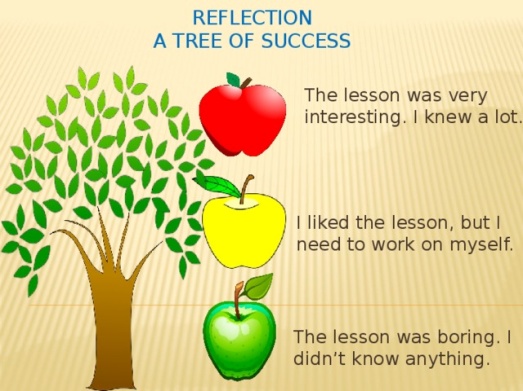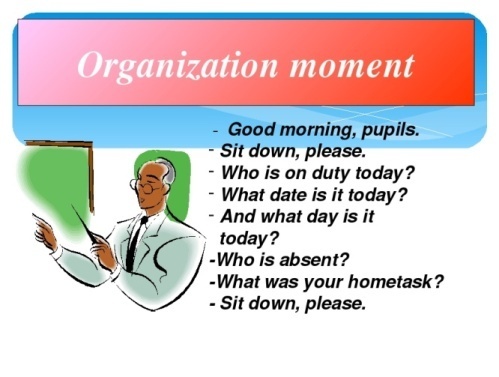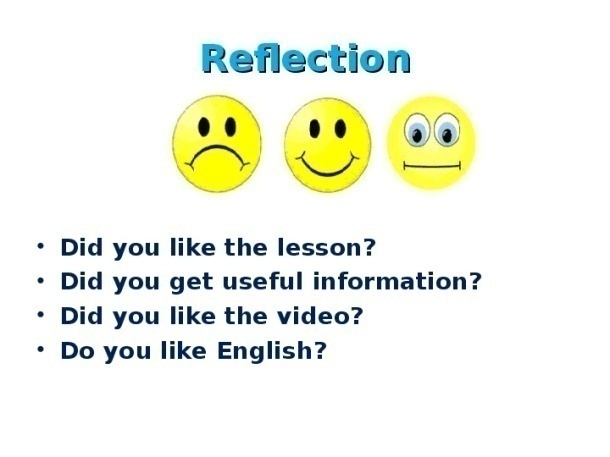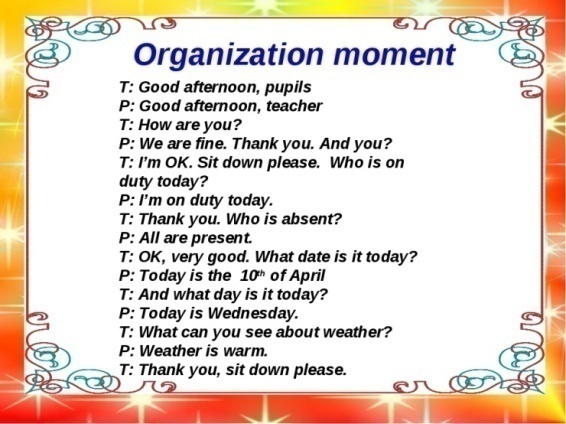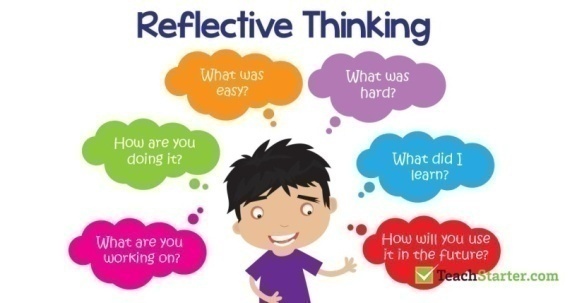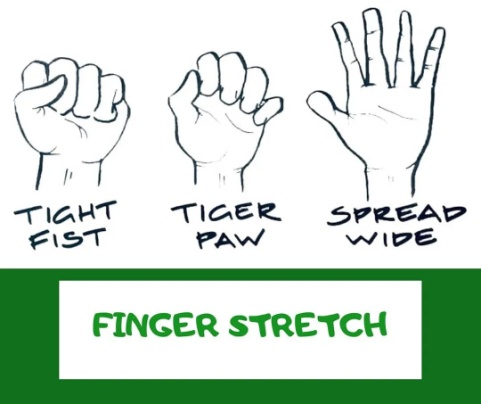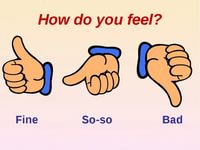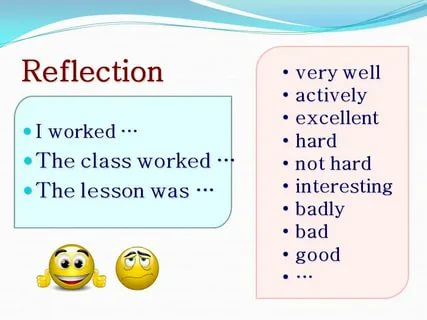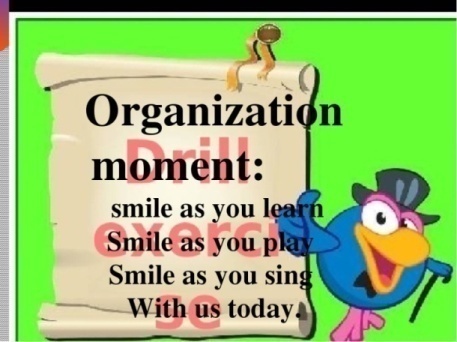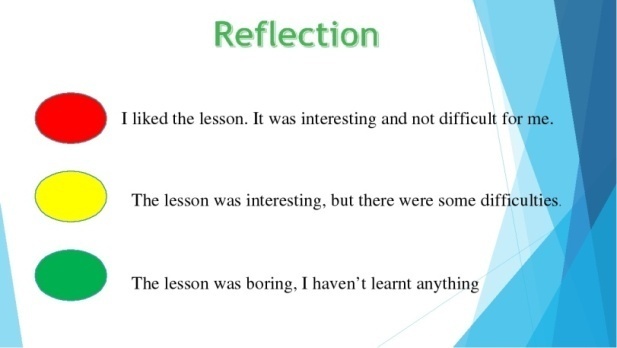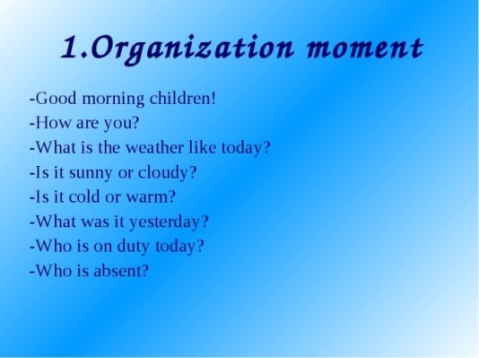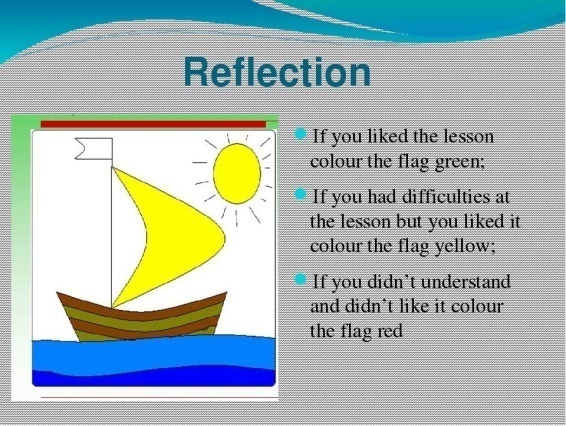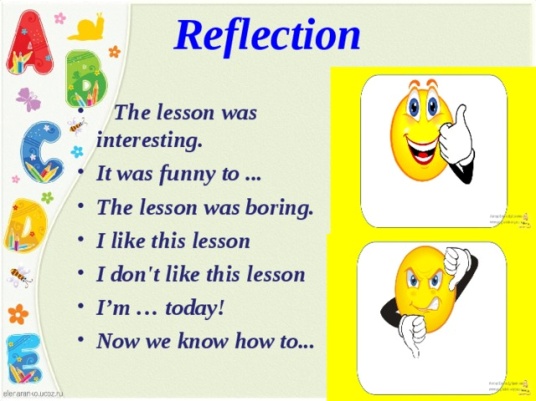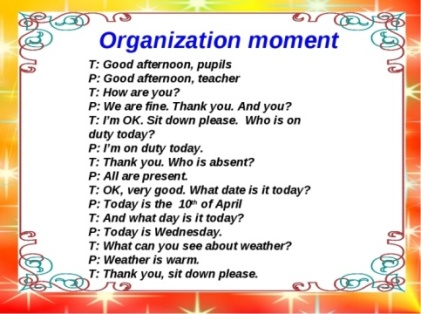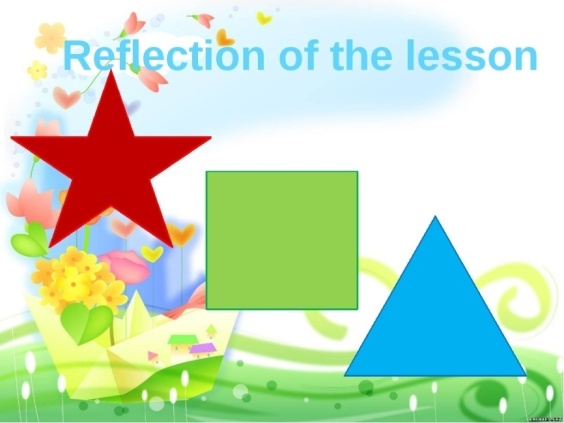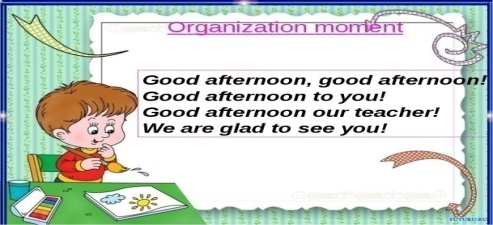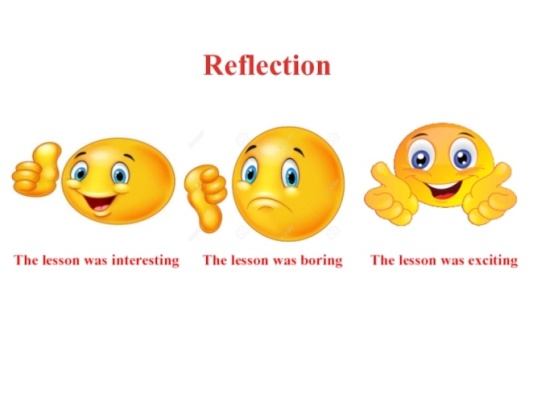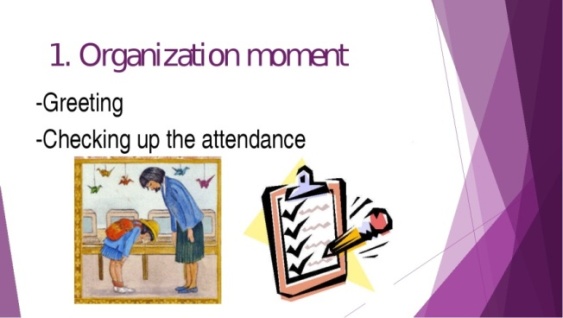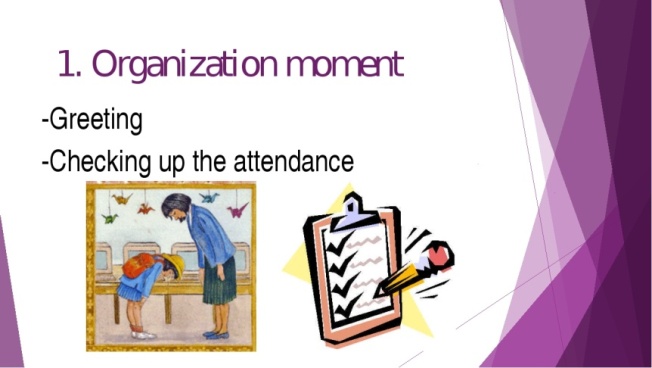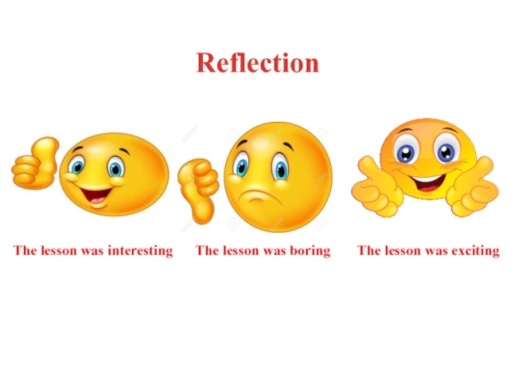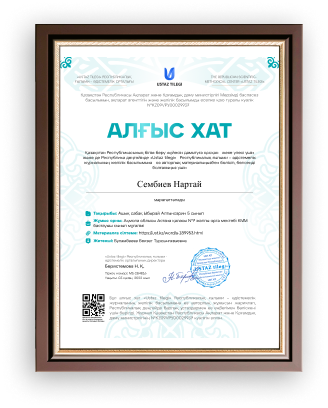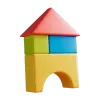
Ахметова Аяжан Ахметовна
«Organizing English lessons for Primary School Students»
Алматы
2025жыл
ӘОЖ 373
М. Х. Дулати атындағы Тараз өңірлік университеті, филология ғылымдарының кандидаты, қауымдастырылған профессоры Н.Б.Есенова
С.С Жанибекова Қызылорда қаласы Болашақ университетінің «Арнайы педагогика және психология» кафедрасының аға оқытушысы, п.ғ.к., Облыстық білім басқармасының балалар оңалту орталығының түзету маманы, РЖА профессоры
Педагогика тарих ғылымдарының магистрі Абиева Ұ.Б.,
Халықаралық ғылым мен білімді қолдау орталығы «Bilim_gilim» әдістемелік кеңес мәжілісінде талқыланып, 2025 ж. «19» наурыз №001/0160 хаттамасымен мақұлданған және баспаға ұсынылған.
Ахметова А.А
«Organizing English lessons for Primary School Students»
Алматы: 2025 (ZIALY Baspasy)
Аңдатпа
Аталған авторлық жұмыс оқу бағдарламасына негізделе үлгілік бағдарламамен сабақтастықты ескере отырып құрастырылған.Білім –тәрбие беру кезеңінде саналы, дұрыс, комуникативті оқу дағдыларын жетілдіру, логикалық қабылдауды дамыту, функционалдық сауаттылықтарын арттыру пәнге деген қызығушылықты, зерттеушілік қабілетті дамытып қалыптастыруға бағытталған авторлық жұмыс білім беру стандартының пәндік тақырыптарының мазмұнын, оқу сағаттарын курс бөлімдері арасында бөлуді, сонымен қатар пәнаралық байланыстарды ескере отырып, пәндер мен пән бөлімдерін зерделеудің ұсынылатын тәртібіне негізделе отырып құрастырылған.
Аннотация
Данная авторская работа составлена с учетом преемственности с типовой программой, основанной на учебном плане.В период обучения авторская работа направлена на развитие и формирование интереса к предмету, исследовательской способности, содержания предметных тем образовательного стандарта, распределения учебных часов между разделами курса, а также межпредметных связей с учетом, исходя из рекомендуемого порядка изучения предметов и предметных разделов.
Abstract
This author's work is compiled taking into account continuity with the standard program based on the curriculum.During the training period, the author's work is aimed at developing and shaping interest in the subject, research ability, the content of subject topics of the educational standard, the distribution of teaching hours between sections of the course, as well as interdisciplinary connections, taking into account, based on the recommended order of studying subjects and subject sections.
ISBN
© Ахметова А.А
Explanatory note
Teaching English to primary school students is both an exciting and challenging endeavor. At this early stage, children typically possess a natural curiosity and willingness to learn, yet they also require carefully structured activities and age-appropriate content to keep them engaged. An effective lesson plan for young learners must take into account several key components: clear objectives, relevant content, interactive teaching methods, a supportive classroom environment, and continual assessment that fosters growth. By paying close attention to these areas, teachers can create meaningful, enjoyable, and successful English language lessons for children. The following essay discusses the essential considerations and practical strategies for organizing English lessons in primary school, emphasizing a balanced, student-centered approach that nurtures language development and instills a lifelong love of learning.
1. Setting Clear Objectives
Before designing any English lesson for primary school students, it is critical to establish clear objectives. Objectives provide a roadmap for the teacher and give learners a sense of purpose. For instance, an objective might be “By the end of this lesson, students will be able to identify and name at least ten common household objects in English,” or “Students will be able to use basic greetings and introduce themselves to others.” Objectives should be specific, measurable, attainable, relevant, and time-bound (SMART). When the goals are well-defined, students and teacher alike can focus on accomplishing them systematically. Moreover, clarity in objectives supports ongoing assessment and helps measure progress effectively.
2. Understanding Developmental Stages
Primary school students typically range from ages five to eleven (though exact age spans differ across educational systems). During these years, children experience rapid cognitive, social, and emotional development. They learn best through play, exploration, repetition, and concrete experiences. Teachers must bear these developmental characteristics in mind when organizing lessons. Young learners have shorter attention spans and may struggle to concentrate on lengthy lectures or abstract explanations. Therefore, it is crucial to incorporate hands-on activities, visuals, and interactive elements that capture their interest. Adjusting the difficulty level and type of activities to match the students’ developmental stage not only enhances motivation but also ensures a more effective learning process.
3. Creating a Positive Classroom Environment
An inviting, positive classroom environment helps foster engagement and cooperation. Young learners thrive in spaces where they feel safe, relaxed, and motivated to try new things. Simple strategies such as greeting students warmly at the door, decorating the classroom with colorful posters, and establishing clear classroom rules set the tone for a welcoming setting. Children should feel that their attempts at speaking English are encouraged and that mistakes are natural parts of the learning process. By consistently offering praise, constructive feedback, and gentle correction, teachers can boost students’ confidence and motivate them to participate actively in the lesson. Incorporating group work or pair work can also foster collaboration, allowing students to practice their language skills with peers while building social connections.
4. Designing Engaging Lesson Content
Effective lesson content for primary school English classes should be relevant, fun, and attainable. Units often revolve around familiar themes such as family, animals, colors, numbers, weather, and basic daily routines. These themes are relatable and help students connect their new language skills to their everyday lives. Including stories, songs, rhymes, and short role-plays engages young learners in a multisensory manner. Students tend to remember new vocabulary better when it is presented within a context that resonates with their own experiences. By using realia (physical objects) like fruit, toys, or classroom items, teachers can offer concrete references that make language input more meaningful.
5. Varying Teaching Methods and Activities
Young learners frequently lose interest if the lesson structure remains repetitive or monotonous. Hence, it is essential to implement a variety of teaching methods and activities that keep them active and intrigued. Some effective methods include:
-
Total Physical Response (TPR): Students respond physically to commands, such as “Stand up,” “Sit down,” or “Jump.” This method taps into kinesthetic learning and helps students link actions with vocabulary.
-
Storytelling: Children love stories. Incorporating short, interactive stories (with visuals or puppets) introduces vocabulary and grammar in a narrative context. Students can participate by predicting story outcomes or echoing key phrases.
-
Songs and Chants: Music and rhythm help make language memorable. Simple songs or chants with repetitive phrases allow children to practice pronunciation and intonation without the pressure of individual speaking.
-
Games and Competitions: Games like “Simon Says,” vocabulary matching, or charades spark excitement. Competition can be a strong motivator, though it is important to keep it friendly and supportive so that no child feels left behind.
-
Art and Crafts: Activities like drawing, coloring, or making collages related to the lesson’s theme provide creative outlets for students to apply newly learned vocabulary.
By mixing activities that target different learning styles—auditory, visual, and kinesthetic—teachers can reach a broader range of students, ensuring that each child has an opportunity to engage with the material in a way that suits their preferences.
6. Incorporating Technology (Where Appropriate)
In many modern classrooms, technology has become a valuable ally in language teaching. Interactive whiteboards, educational apps, or short video clips can bring variety to the lesson, reinforce key vocabulary, and cater to tech-savvy children’s interests. For instance, teachers might use animated videos that demonstrate dialogues or highlight vocabulary in entertaining contexts. Alternatively, digital flashcards and online games can help reinforce spelling and pronunciation. However, it is crucial to maintain a balance. While technology can be a powerful supplement, it should not overshadow hands-on, face-to-face interaction, especially with younger students who need to develop social and communication skills in a physical environment.
7. Managing Classroom Behavior
Classroom management is a fundamental aspect of organizing English lessons for primary students. Children this age can be restless, chatty, or easily distracted, especially when the lesson is taught in a second language. To maintain a productive atmosphere, teachers should establish routines early on. Clear signals for transitions (e.g., clapping patterns, chimes, or short rhythmic phrases) help students anticipate changes in activity. Creating a simple reward system, such as stickers, star charts, or “English points,” can provide positive reinforcement. Reminding students of class rules—listening, respecting each other’s turns, speaking softly—keeps them mindful of acceptable behavior. Above all, consistency and fairness are key; children thrive when they know what to expect and understand the consequences of their actions.
8. Fostering Interaction and Communication
One of the chief goals of an English lesson is to encourage students to communicate. Even at a very basic level, teachers can involve children in question-answer patterns, short dialogues, and group discussions. Simple routines—like asking each other about favorite foods, colors, or how they feel—stimulate speaking in a non-threatening manner. Pair work allows students to practice with a partner, reducing the anxiety of speaking in front of the entire class. Role-playing real-life scenarios—such as buying groceries, visiting a zoo, or talking about the weather—helps learners see the immediate utility of their language skills. The teacher’s role is to guide and model correct usage, offering corrections sensitively and consistently so that students grow in accuracy and fluency.
9. Ongoing Assessment and Feedback
Assessment in a primary classroom should be both formative and summative, providing teachers with insights into each student’s progress, strengths, and areas needing improvement. Formative assessment includes observing children during activities, listening to their oral responses, and checking written work (where applicable) to identify misunderstandings early on. Summative assessments, such as end-of-unit quizzes or simple projects, help measure overall mastery of skills and knowledge. However, with young learners, it is essential that assessments be non-intimidating and supportive. Simple tasks like drawing a picture based on a spoken description, matching pictures to words, or verbally naming items are often more suitable than formal written tests at this level. Regular, constructive feedback—focusing on what was done well and what can be improved—encourages children to keep trying and reduces the fear of making mistakes.
10. Integrating Cultural Elements
When organizing English lessons, introducing cultural components can be highly engaging. Children are naturally curious about how other people live, celebrate, and speak. Teachers can weave in simple cultural references from English-speaking countries—holidays like Halloween, Christmas traditions, or popular children’s songs—while encouraging students to share their own cultural practices in English. This approach fosters cultural awareness, broadens perspectives, and gives a context for the language. Young learners, in particular, enjoy crafts and festive activities related to various cultural events, which can significantly enhance their motivation to learn.
11. Reflecting and Adapting
Reflective practice is vital for teachers. After each lesson, it is beneficial to note what worked well and where challenges arose. If certain activities fail to capture children’s interest or the pacing felt too slow (or too fast), adjustments can be made for future lessons. By reflecting regularly on students’ engagement, performance, and feedback, teachers can refine their approaches to continually improve outcomes. Professional development workshops, collaboration with colleagues, and staying updated with new teaching materials also contribute to ongoing growth.
12. Encouraging Parental Involvement
Parents can play an instrumental role in their children’s language development. Encouraging parents to read simple English stories at home, watch cartoons in English, or ask simple questions can extend the learning beyond the classroom walls. Teachers may send home word lists, short reading passages, or vocabulary games to involve families. Communicating with parents about the course objectives, upcoming projects, and suggestions for at-home activities fosters a supportive community for language learning. As children see that both their teachers and parents value English, they become more motivated to engage actively with the language.
Conclusion
Organizing English lessons for primary school students is an intricate process that hinges on clarity of objectives, an understanding of children’s developmental stages, and the creation of an engaging, supportive environment. By employing varied, interactive methods, integrating technology sensibly, managing behavior fairly, and encouraging communication through meaningful tasks, teachers can ensure that young learners develop a solid foundation in the English language. Ongoing assessment, reflective practice, and parental involvement further enhance students’ progress and passion for learning. In the long term, well-structured, enjoyable lessons inspire children to value language learning and equip them with vital skills for academic and personal success. Through a thoughtful and creative approach, educators can cultivate confident, curious, and motivated English learners in the primary classroom—and help set the stage for their continued growth as proficient language users.
Introduction
Organizing English lessons for primary school students presents a unique opportunity to lay a solid foundation for lifelong language acquisition. At this developmental stage, children are naturally curious, energetic, and open to new experiences. By tapping into their innate enthusiasm, educators can inspire a love for English that extends well beyond the classroom. However, success in this venture requires age-appropriate teaching methods, engaging materials, and a well-structured curriculum that aligns with both educational standards and children’s developmental needs.
Goals
-
Language Mastery: Develop students’ basic proficiency in English, focusing on vocabulary, pronunciation, and simple grammar structures.
-
Confidence Building: Foster a supportive atmosphere that encourages children to speak, read, write, and listen without fear of making mistakes.
-
Interactive Engagement: Promote active participation through group activities, songs, games, and role-playing, ensuring that each lesson is enjoyable and motivating.
-
Cultural Awareness: Introduce students to aspects of the cultures of English-speaking countries, broadening their worldview and cultivating respect for diversity.
Objectives
-
Equip students with the fundamental linguistic tools necessary for everyday communication, including greetings, common expressions, and basic sentence structures.
-
Strengthen listening skills by using interactive storytelling, audio clips, and simple instructions.
-
Develop early reading and writing abilities through level-appropriate texts, worksheets, and guided practice.
-
Encourage collaborative learning by integrating pair work, group tasks, and playful competitions into lessons.
Relevance
English has become a global medium of communication across various
spheres—academic, professional, and cultural. By introducing
primary students to English at an early age, educators pave the way
for their future academic achievements and global readiness. Early
exposure also enhances cognitive development, improves overall
language sensitivity, and fosters adaptive thinking skills. Thus,
an innovative, well-organized English curriculum at the primary
level is a cornerstone of modern education, aligning with the
growing need for multilingual proficiency in an interconnected
world.
Course Innovation
This course integrates a variety of teaching methods—such as Total
Physical Response (TPR), educational technology tools, and thematic
storytelling—to ensure holistic learning experiences. Lessons are
designed to activate multiple learning styles through visual,
auditory, and kinesthetic activities. By blending traditional
approaches (like flashcards and songs) with modern resources (like
digital apps and interactive whiteboards), the course meets the
varied needs of young learners. Additionally, continuous formative
assessments, reflective practice, and parent-teacher collaboration
are embedded into the curriculum, helping to refine and personalize
instruction.
Expected Results
Upon completion of the course, primary school students will have
gained foundational competency in English, enabling them to
understand and use simple words, phrases, and sentences related to
daily life. They will demonstrate increased confidence in speaking
and listening, engage comfortably with basic reading materials, and
begin forming simple written sentences. The positive, interactive
environment will not only bolster their language development but
also nurture creativity, teamwork, and a lifelong enthusiasm for
learning.
Stable content section
1–2: Greetings and Introductions
-
Common greetings: “Hello,” “Hi,” “Good morning,” “Good afternoon,” “Good evening”
-
Farewells: “Goodbye,” “Bye”
-
Introducing oneself: “My name is… What’s your name?”
-
Simple question-answer patterns: “How are you?” / “I’m fine, thank you.”
-
Brief conversational activities (e.g., pair work introducing classmates)
3–4: Alphabet and Phonics Basics
-
The English alphabet (A–Z)
-
Distinguishing vowels and consonants
-
Basic letter-sound correspondence (e.g., “A” – /æ/ or /eɪ/, “B” – /b/)
-
Sample words for each letter (“A is for apple,” “B is for book”)
-
Phonics games and flashcard drills
5–6: Colors and Shapes
-
Primary color words (red, blue, green, yellow, orange, purple, black, white)
-
Basic shapes (circle, square, triangle, rectangle)
-
Describing objects by color and shape (“a red circle,” “a blue square”)
-
Coloring and drawing tasks to reinforce vocabulary
7–8: Numbers and Counting
-
Introducing numbers (1–10, or 1–20/30 as appropriate)
-
Practicing counting objects (“How many pencils are there?”)
-
Simple number-based activities and games (e.g., counting apples, matching numbers with pictures)
-
Writing and pronouncing numerals in English
9–10: Family and Friends
-
Family members (mother, father, sister, brother, grandmother, grandfather)
-
The concept of “friend” or “best friend”
-
Simple sentences: “This is my mother,” “He is my friend.”
-
Asking/answering questions: “Do you have a sister?” / “Yes, I do.” / “No, I don’t.”
-
Using pictures or a “family tree” chart for practice
11–12: Classroom Objects and Commands
-
Common classroom objects (desk, chair, board, pencil, book, ruler)
-
Action commands (stand up, sit down, open your book, close your book)
-
Total Physical Response (TPR) exercises, responding physically to teacher instructions
-
Matching objects and commands through card or picture activities
13–14: Days of the Week and Daily Routines
-
Days of the week (Monday, Tuesday, Wednesday, Thursday, Friday, Saturday, Sunday)
-
Basic daily actions (wake up, eat breakfast, go to school, do homework, go to bed)
-
Using the simple present tense to describe routines (“I wake up at 7 o’clock.”)
-
Making a weekly schedule or timetable
15–16: Weather and Seasons
-
Weather words (sunny, rainy, windy, snowy, cloudy)
-
Four seasons (spring, summer, autumn/fall, winter)
-
Simple questions: “What’s the weather like?” / “It’s sunny.”
-
Seasonal descriptions (“In winter, it’s cold.”)
-
Weather posters or mini role-plays (e.g., weather forecast)
17–18: Animals and Nature
-
Animal names (dog, cat, lion, tiger, elephant, bird)
-
Basic nature words (tree, flower, grass, river, mountain)
-
Sorting animals (pets vs. wild) and describing (“A lion is big.”)
-
Nature-related picture descriptions and short sentences
19–20: Food and Drinks
-
Common foods (apple, banana, bread, pizza, soup, rice)
-
Drinks (water, juice, milk, tea, coffee)
-
Expressing preferences: “I like apples,” “I don’t like carrots.”
-
Polite requests: “Can I have…?” / “Would you like…?”
-
Role-play scenarios with menus or picture cards
21–22: Parts of the Body
-
Body parts (head, shoulders, knees, toes, eyes, ears, mouth, nose)
-
Using songs or TPR (e.g., “Head, Shoulders, Knees, and Toes”)
-
Simple statements: “I have two eyes.”
-
Drawing or labeling body parts in worksheets
23–24: Home and Rooms
-
Rooms in a house (kitchen, bedroom, living room, bathroom)
-
Describing one’s home: “My bedroom has a bed.”
-
Location prepositions (in, on, under)
-
Using pictures or mini house models to practice
25–26: Clothing and Shopping
-
Clothing items (shirt, pants, shoes, hat, coat)
-
Basic shopping dialogue: “How much is it?” / “It’s five dollars.”
-
Describing what you wear: “I’m wearing a blue shirt.”
-
Role-playing a simple store scenario (buyer and seller)
27–28: Simple Storytelling
-
A short, illustrated story (e.g., “The Very Hungry Caterpillar”)
-
Key vocabulary from the story, focusing on characters and sequence (beginning, middle, end)
-
Guided retelling: “What happened first?”
-
Simple comprehension questions and activities (picture sequencing)
29–30: Basic Grammar Consolidation
-
Reviewing core structures (present simple, “I have…,” basic prepositions, question forms)
-
Practice exercises (fill-in-the-blanks, matching, short Q&A)
-
Identifying and correcting common mistakes
-
Group drills or quizzes to reinforce accuracy
31–32: Fun Review and Group Projects
-
Revisiting all previous topics through collaborative activities
-
Creating posters, short skits, or simple presentations in small groups
-
Interactive games covering vocabulary, grammar, and phrases
-
Encouraging creativity and teamwork to showcase learned content
33–34: Assessment and Culmination
-
Friendly, low-pressure evaluations (oral questions, short written tasks, picture matching)
-
Summarizing the course and highlighting key achievements
-
Individual or group feedback sessions
-
Celebrating progress and discussing next steps in English learning
Regulatory section
Calendar-thematic plan
From 2 hours to 34 hours per week
|
№ |
Topic |
Hours |
Lesson objectives |
Expected Results |
|
1-2 |
Greetings and Introductions |
2 |
- Teach basic greetings (“Hello,” “Goodbye”) and introductions (“My name is...”) Practice short exchanges like “How are you?” / “I’m fine.” |
- Students confidently greet each other and introduce themselves Begin feeling comfortable speaking English in front of peers |
|
3-4 |
Alphabet and Phonics Basics |
2 |
- Familiarize students with letters A to Z Introduce basic phonics (simple vowel and consonant sounds) |
- Recognize letters and match them to common sounds Form basic associations (e.g., “A is for apple”) |
|
5-6 |
Colors and Shapes |
2 |
- Teach color words (red, blue, green, etc.) and basic shapes (circle, square, triangle) <br/>- Practice describing objects by color and shape |
- Identify and name colors and shapes Use simple sentences (“This is a red circle”) |
|
7-8 |
Numbers and Counting |
2 |
- Introduce numbers (1–20 or 1–30) <br/>- Practice counting and using numbers in questions (“How many…?”) |
- Count objects accurately Use number words in short exchanges (e.g., “There are 5 apples”) |
|
9-10 |
Family and Friends |
2 |
- Learn family-related vocabulary (mother, father, sister, brother) Describe who is in one’s family or circle of friends |
- Use simple possessive phrases (“My brother is...”) Become more comfortable discussing personal life in English |
|
11-12 |
Classroom Objects and Commands |
2 |
- Teach names of classroom objects (desk, chair, pencil, book) Reinforce TPR (Total Physical Response) with commands (stand up, sit down) |
- Correctly respond to classroom instructions Acquire functional vocabulary for daily school routines |
|
13-14 |
Days of the Week and Daily Routines |
2 |
- Introduce days (Monday–Sunday) Use the simple present tense for daily activities (“I wake up at 7 AM”) |
- Name all seven days in English Describe basic daily routines (“I go to school at 8 AM”) |
|
15-16 |
Weather and Seasons |
2 |
- Teach weather vocabulary (sunny, rainy, cloudy) and seasons (spring, summer, autumn, winter) Practice simple weather expressions |
- Discuss basic weather conditions Improved speaking and listening regarding everyday contexts |
|
17-18 |
Animals and Nature |
2 |
- Introduce common animal names (dog, cat, lion, tiger) Discuss nature terms (tree, flower, grass) |
- Broaden vocabulary with animal/nature words Form simple descriptive sentences (“A lion is big”) |
|
19-20 |
Food and Drinks |
2 |
- Present basic food items (fruit, vegetables, snacks) and drinks (water, juice) Express likes/dislikes (“I like apples”) |
- Communicate preferences Use polite expressions (“Can I have…?”) |
|
21-22 |
Parts of the Body |
2 |
- Teach body parts (head, shoulders, knees, toes) Reinforce through songs and TPR |
- Accurately name body parts in English Engage physically with the language (e.g., action songs) |
|
23-24 |
Home and Rooms |
2 |
- Introduce home-related vocabulary (kitchen, bedroom, living room) Practice describing one’s home environment |
- Describe a house using basic sentences (“My bedroom has a bed.”) Practice prepositions (in, on, under) |
|
25-26 |
Clothing and Shopping |
2 |
- Teach clothing vocabulary (shirt, pants, shoes) Practice shopping dialogues (“How much is it?”) |
- Name clothing items Role-play simple shopping interactions |
|
27-28 |
Simple Storytelling |
2 |
- Introduce a short story using illustrations Emphasize key vocabulary and basic narrative structure |
- Follow a simple plot and answer comprehension Practice oral retelling of short stories |
|
29-30 |
Basic Grammar Consolidation |
2 |
- Review essential grammar points (pronouns, simple present tense, prepositions) Interactive exercises (fill-in-the-blanks, quizzes) |
- Demonstrate better sentence accuracy Reinforce prior knowledge for greater retention |
|
31-32 |
Fun Review and Group Projects |
2 |
- Engage students in small group projects (posters, skits, presentations) Recap topics from previous lessons in a creative format |
- Showcase learned material in a collaborative setting Increase confidence and motivation |
|
33-34 |
Assessment and Culmination |
2 |
- Conduct simple, friendly evaluations (oral Q&A, matching tasks) Summarize entire course and celebrate achievements |
- Demonstrate overall competence in basic English skills Provide constructive feedback for continued improvement |
Information and Methodological Section
Evaluation Criteria
1. Speaking Skills
Evaluation Points:
-
Vocabulary Usage
-
Does the student use topic-related words correctly?
-
Are they able to incorporate new or recently learned vocabulary?
-
-
Pronunciation and Clarity
-
Are words pronounced clearly and understandably?
-
Is the student making an effort to mimic proper English sounds?
-
-
Sentence Formation
-
Does the student construct basic sentences with correct word order?
-
Are grammatical structures (e.g., subject-verb agreement) generally followed?
-
-
Interaction and Participation
-
Does the student readily join in short conversations or role-plays?
-
Are they willing to ask and answer questions in pairs or groups?
-
Sample Rating:
-
Excellent: Consistently uses new vocabulary, speaks clearly, forms coherent sentences with minimal mistakes, and actively engages in dialogue.
-
Good: Uses adequate vocabulary with some minor pronunciation or grammar errors, maintains basic conversations, and is generally willing to speak.
-
Satisfactory: Has limited but functional vocabulary, makes noticeable mistakes in pronunciation or structure, but can still convey meaning with support.
-
Needs Improvement: Struggles significantly with basic words and sentence formation, rarely participates, or needs constant prompting.
2. Listening Skills
Evaluation Points:
-
Comprehension of Instructions
-
Can the student follow simple classroom commands (e.g., “Stand up,” “Open your book”)?
-
Do they understand short, spoken prompts and questions?
-
-
Story/Audio Understanding
-
Can the student grasp the main idea of short stories, rhymes, or dialogues?
-
Are they able to answer basic comprehension questions?
-
-
Response to Audio Stimuli
-
Does the student respond appropriately to questions based on a listened text?
-
Can they identify key words or main points?
-
Sample Rating:
-
Excellent: Responds accurately to oral instructions and questions, demonstrates strong understanding of short passages or dialogues.
-
Good: Generally follows instructions and understands main ideas, may require repetition for detail.
-
Satisfactory: Understands basic commands and parts of a simple story or dialogue, needs support or rephrasing to fully grasp content.
-
Needs Improvement: Frequently confused by spoken tasks or instructions, requires multiple repetitions or clarifications.
3. Reading Skills
Evaluation Points:
-
Decoding and Word Recognition
-
Can the student recognize familiar words quickly?
-
Are they able to sound out new words (basic phonics)?
-
-
Basic Fluency
-
Do they read short sentences with appropriate speed and accuracy?
-
Is the reading mostly smooth, or do they hesitate often?
-
-
Comprehension
-
Can they understand the gist of a short, simple passage?
-
Do they correctly answer basic questions about what they have read?
-
Sample Rating:
-
Excellent: Reads short texts fluently with minimal errors, demonstrates clear understanding of the content.
-
Good: Recognizes most common words easily, can read short passages with some pauses, understands main ideas.
-
Satisfactory: Relies on sounding out many words, may miss some meaning, but completes basic reading tasks.
-
Needs Improvement: Struggles significantly with word recognition and decoding, shows limited comprehension without guidance.
4. Writing Skills
Evaluation Points:
-
Spelling and Vocabulary
-
Does the student spell familiar words correctly?
-
Do they incorporate new vocabulary in simple written exercises?
-
-
Sentence Construction
-
Are basic sentences structured properly (subject + verb + object)?
-
Do they apply grammar rules learned in class (e.g., plural “-s,” simple present tense)?
-
-
Clarity and Neatness
-
Is handwriting legible and properly spaced?
-
Does the student convey meaning with minimal confusion?
-
-
Writing Tasks
-
Can they complete simple exercises (filling gaps, matching words) accurately?
-
Do they attempt short compositions (1–2 sentences) on familiar topics?
-
Sample Rating:
-
Excellent: Writes short sentences clearly and accurately, demonstrates correct spelling and grammar usage, attempts more than required.
-
Good: Generally accurate spelling of common words, occasional grammar slips, can form coherent sentences.
-
Satisfactory: Makes noticeable errors in spelling or grammar, but the main idea is usually understandable.
-
Needs Improvement: Struggles to form complete sentences, frequent spelling or grammar mistakes hinder comprehension.
5. Engagement and Behavior
Evaluation Points:
-
Participation
-
Does the student show enthusiasm in class activities, games, and group work?
-
Are they actively involved in discussions, volunteering answers or questions?
-
-
Cooperation and Teamwork
-
How well does the student collaborate with classmates during pair or group tasks?
-
Do they show respect and listen to others’ contributions?
-
-
Effort and Attitude
-
Do they try new tasks willingly or shy away from challenges?
-
Are they receptive to feedback and willing to improve?
-
-
Consistency
-
Is the student’s effort steady throughout the course?
-
Do they maintain positive learning habits (bringing materials, staying focused)?
-
Sample Rating:
-
Excellent: Consistently engaged, cooperative, and motivated, contributing positively to class dynamics.
-
Good: Participates well in most activities, works cooperatively, shows reasonable effort.
-
Satisfactory: Occasionally needs encouragement to join activities, works better with close guidance.
-
Needs Improvement: Often distracted or disengaged, rarely contributes to discussions, resists team tasks.
Using the Criteria
-
Combine or adapt these categories to align with your grading system (e.g., letter grades, numerical scores, descriptive feedback).
-
Offer formative (ongoing) assessments throughout lessons (observations, short quizzes, TPR checks) and summative (end-of-term) assessments to gauge progress.
-
Provide positive, constructive feedback so primary learners remain motivated and see language learning as an enjoyable, confidence-building process.
Educational and methodological complex
Lesson plans
Short-term plan 1-2
|
Teacher name: |
|
||
|
Date: |
|
||
|
Grade: |
|
Number present: |
absent: |
|
Theme of the lesson |
Greetings and Introductions |
||
|
Lesson objectives |
- Teach basic greetings (“Hello,” “Goodbye”) and introductions (“My name is...”) Practice short exchanges like “How are you?” / “I’m fine.” |
||
|
Lessonperiod / time |
Teacher's action |
Studentaction |
Evaluation |
Resources |
|
The beginning of the lesson 10 min |
Greeting learners. Greetings. Greeting learners. Setting positive atmosphere by asking some ice breaking questions. T. listens duties report
|
|
The method of "verbal encouragement" |
|
|
The middle of the lesson 30 min |
Lesson 1: Greetings and Basic IntroductionsI. Organizational Stage (5 minutes)
II. Introducing New Material (20 minutes)
III. Practice Activities (15 minutes)
IV. Preparation for the Next Stage (5 minutes)
V. Conclusion (5 minutes)
Lesson 2: Greetings, Introductions, and Brief ConversationsI. Organizational Stage (5 minutes)
II. Review and Expanding Knowledge (15 minutes)
III. Conversational Activities (20 minutes)
IV. Preparation for the Next Stage (5 minutes)
V. Conclusion (5 minutes)
|
Performs exercises Performs exercises Performs text-related tasks Performs text-related tasks Performs text-related tasks Performs text-related tasks Performs exercises Performs text-related tasks Performs exercises Performs text-related tasks Performs text-related tasks |
Using the thumb method
The "wonderful, good, wonderful" method Through a traffic light
The "wonderful, good, wonderful" method Through a traffic light
The "wonderful, good, wonderful" method Through a traffic light
The "wonderful, good, wonderful" method Through a traffic light |
|
|
End of lesson 5 min |
Reflection
|
Creates feedback |
|
|
Short-term plan-3-4
|
Teacher name: |
|
||
|
Date: |
|
||
|
Grade: |
|
Number present: |
absent: |
|
Theme of the lesson |
Alphabet and Phonics Basics |
||
|
Lesson objectives |
- Familiarize students with letters A to Z Introduce basic phonics (simple vowel and consonant sounds) |
||
Lessonaction
|
Lessonperiod / time |
Teacher's action |
Studentaction |
Evaluation |
Resources |
|
The beginning of the lesson 10 min |
Greeting learners.
|
|
The method of "verbal encouragement" |
|
|
The middle of the lesson 30min |
Lesson 3: Introduction to the English Alphabet and Basic SoundsI. Organizational Stage (5 minutes)
II. Introducing New Material (20 minutes)
III. Phonics Games and Flashcard Drills (15 minutes)
IV. Preparation for the Next Stage (5 minutes)
V. Conclusion (5 minutes)
Lesson 4: Completing the Alphabet and Expanding PhonicsI. Organizational Stage (5 minutes)
II. Introducing New Material (20 minutes)
III. Phonics Games and Flashcard Drills (15 minutes)
IV. Preparation for the Next Stage (5 minutes)
V. Conclusion (5 minutes)
|
Performs exercises Performs exercises Performs text-related tasks Performs text-related tasks Performs text-related tasks Performs text-related tasks Performs exercises Performs text-related tasks Performs exercises |
Using the thumb method
The "wonderful, good, wonderful" method Through a traffic light
The "wonderful, good, wonderful" method Through a traffic light
The "wonderful, good, wonderful" method Through a traffic light
The "wonderful, good, wonderful" method Through a traffic light |
|
|
End of lesson 5 min |
|
Creates feedback |
|
|
Short-term plan-5-6
|
Teacher name: |
|
||
|
Date: |
|
||
|
Grade: |
|
Number present: |
absent: |
|
Theme of the lesson |
Colors and Shapes |
||
|
Lesson objectives |
- Teach color words (red, blue, green, etc.) and basic shapes (circle, square, triangle) <br/>- Practice describing objects by color and shape |
||
Lessonaction
|
Lessonperiod / time |
Teacher's action |
Studentaction |
Evaluation |
Resources |
|
The beginning of the lesson 10 min |
Greeting learners.
|
|
The method of "verbal encouragement" |
|
|
The middle of the lesson 30min |
Lesson 5: Introduction to ColorsI. Organizational Stage (5 minutes)
II. Introducing New Material (20 minutes)
III. Coloring Task (15 minutes)
IV. Preparation for the Next Stage (5 minutes)
V. Conclusion (5 minutes)
Lesson 6: Introduction to Shapes and Describing ObjectsI. Organizational Stage (5 minutes)
II. Introducing New Material (20 minutes)
III. Drawing and Describing Task (15 minutes)
IV. Preparation for the Next Stage (5 minutes)
V. Conclusion (5 minutes)
|
Performs exercises Performs exercises Performs text-related tasks Performs text-related tasks Performs text-related tasks Performs text-related tasks Performs exercises Performs text-related tasks |
Using the thumb method
The "wonderful, good, wonderful" method Through a traffic light
The "wonderful, good, wonderful" method Through a traffic light
The "wonderful, good, wonderful" method Through a traffic light
The "wonderful, good, wonderful" method Through a traffic light |
|
|
End of lesson 5 min Reflection |
|
Creates feedback |
|
|
Short-term plan-7-8
|
Teacher name: |
|
||
|
Date: |
|
||
|
Grade: |
|
Number present: |
absent: |
|
Theme of the lesson |
Numbers and Counting |
||
|
Lesson objectives |
- Introduce numbers (1–20 or 1–30) <br/>- Practice counting and using numbers in questions (“How many…?”) |
||
Lessonaction
|
Lessonperiod / time |
Teacher's action |
Studentaction |
Evaluation |
Resources |
|
The beginning of the lesson 10 min |
Greeting learners.
|
|
The method of "verbal encouragement" |
|
|
|
Lesson 7: Introducing Numbers 1-10I. Organizational Stage (5 minutes)
II. Introducing New Material (20 minutes)
III. Simple Number-Based Activities and Games (15 minutes)
IV. Writing Numerals in English (5 minutes)
V. Conclusion (5 minutes)
Lesson 8: Numbers 11-20 and Further CountingI. Organizational Stage (5 minutes)
II. Introducing New Material (20 minutes)
III. Simple Number-Based Activities and Games (15 minutes)
IV. Writing Numerals in English (5 minutes)
V. Conclusion (5 minutes)
|
Performs exercises Performs exercises Performs text-related tasks Performs text-related tasks Performs text-related tasks Performs text-related tasks Performs exercises Performs text-related tasks Performs exercises Performs text-related tasks Performs text-related tasks |
Using the thumb method
The "wonderful, good, wonderful" method Through a traffic light
The "wonderful, good, wonderful" method Through a traffic light
The "wonderful, good, wonderful" method Through a traffic light
The "wonderful, good, wonderful" method Through a traffic light |
|
|
End of lesson 5 min Reflection |
|
Creates feedback |
|
|
Short-term plan-9-10
|
Teacher name: |
|
||
|
Date: |
|
||
|
Grade: |
|
Number present: |
absent: |
|
Theme of the lesson |
Family and Friends |
||
|
Lesson objectives |
- Learn family-related vocabulary (mother, father, sister, brother) Describe who is in one’s family or circle of friends |
||
Lessonaction
|
Lessonperiod / time |
Teacher's action |
Studentaction |
Evaluation |
Resources |
|
The beginning of the lesson 10 min |
Greeting learners.
|
|
The method of "verbal encouragement" |
|
|
|
Lesson 9: Family MembersI. Organizational Stage (5 minutes)
II. Introducing New Material (20 minutes)
III. Activities (15 minutes)
IV. Preparation for the Next Stage (5 minutes)
V. Conclusion (5 minutes)
Lesson 10: Talking About Family and FriendsI. Organizational Stage (5 minutes)
II. Introducing New Material (20 minutes)
III. Activities (15 minutes)
IV. Preparation for the Next Stage (5 minutes)
V. Conclusion (5 minutes)
|
Performs exercises Performs exercises Performs text-related tasks Performs text-related tasks Performs text-related tasks Performs text-related tasks Performs exercises Performs text-related tasks Performs exercises Performs text-related tasks Performs text-related tasks |
Using the thumb method
The "wonderful, good, wonderful" method Through a traffic light
The "wonderful, good, wonderful" method Through a traffic light
The "wonderful, good, wonderful" method Through a traffic light
The "wonderful, good, wonderful" method Through a traffic light |
|
|
End of lesson 5 min Reflection |
|
Creates feedback |
|
|
Short-term plan-11-12
|
Teacher name: |
|
||
|
Date: |
|
||
|
Grade: |
|
Number present: |
absent: |
|
Theme of the lesson |
Classroom Objects and Commands |
||
|
Lesson objectives |
- Teach names of classroom objects (desk, chair, pencil, book) Reinforce TPR (Total Physical Response) with commands (stand up, sit down) |
||
Lessonaction
|
Lessonperiod / time |
Teacher's action |
Studentaction |
Evaluation |
Resources |
|
The beginning of the lesson 10 min |
Greeting learners.
|
|
The method of "verbal encouragement" |
|
|
|
Lesson 11: Classroom ObjectsI. Organizational Stage (5 minutes)
II. Introducing New Material (20 minutes)
III. Activities (15 minutes)
IV. Preparation for the Next Stage (5 minutes)
V. Conclusion (5 minutes)
Lesson 12: Classroom CommandsI. Organizational Stage (5 minutes)
II. Introducing New Material (20 minutes)
III. TPR Exercises and Practice (15 minutes)
IV. Preparation for the Next Stage (5 minutes)
V. Conclusion (5 minutes)
|
Performs exercises Performs exercises Performs text-related tasks Performs text-related tasks Performs text-related tasks Performs text-related tasks Performs exercises Performs text-related tasks Performs exercises |
Using the thumb method
The "wonderful, good, wonderful" method Through a traffic light
The "wonderful, good, wonderful" method Through a traffic light
The "wonderful, good, wonderful" method Through a traffic light
|
|
|
End of lesson 5 min |
|
Creates feedback |
|
|
hort-term plan-13-14
|
Teacher name: |
|
||
|
Date: |
|
||
|
Grade: |
|
Number present: |
absent: |
|
Theme of the lesson |
Days of the Week and Daily Routines |
||
|
Lesson objectives |
- Introduce days (Monday–Sunday) Use the simple present tense for daily activities (“I wake up at 7 AM”) |
||
Lessonaction
|
Lessonperiod / time |
Teacher's action |
Studentaction |
Evaluation |
Resources |
|
The beginning of the lesson 10 min |
Greeting learners.
|
|
The method of "verbal encouragement" |
|
|
|
Lesson 13: Days of the Week and Basic Daily ActionsI. Organizational Stage (5 minutes)
II. Introducing New Material (20 minutes)
III. Activities (15 minutes)
IV. Preparation for the Next Stage (5 minutes)
V. Conclusion (5 minutes)
Lesson 14: Describing Daily Routines and Making a ScheduleI. Organizational Stage (5 minutes)
II. Introducing New Material (20 minutes)
III. Making a Weekly Schedule or Timetable (15 minutes)
IV. Preparation for the Next Stage (5 minutes)
V. Conclusion (5 minutes)
|
Performs exercises Performs exercises Performs text-related tasks Performs text-related tasks Performs text-related tasks Performs text-related tasks Performs exercises |
Using the thumb method
The "wonderful, good, wonderful" method Through a traffic light
The "wonderful, good, wonderful" method Through a traffic light |
|
|
End of lesson 5 min |
|
|
|
|
Short-term plan-15-16
|
Teacher name: |
|
||
|
Date: |
|
||
|
Grade: |
|
Number present: |
absent: |
|
Theme of the lesson |
Weather and Seasons |
||
|
Lesson objectives |
- Teach weather vocabulary (sunny, rainy, cloudy) and seasons (spring, summer, autumn, winter) Practice simple weather expressions |
||
Lessonaction
|
Lessonperiod / time |
Teacher's action |
Studentaction |
Evaluation |
Resources |
|
The beginning of the lesson 10 min |
Greeting learners.
|
|
The method of "verbal encouragement" |
|
|
|
Lesson 15: Weather WordsI. Organizational Stage (5 minutes)
II. Introducing New Material (20 minutes)
III. Activities (15 minutes)
IV. Preparation for the Next Stage (5 minutes)
V. Conclusion (5 minutes)
Lesson 16: Seasons and Seasonal DescriptionsI. Organizational Stage (5 minutes)
II. Introducing New Material (20 minutes)
III. Activities (15 minutes)
IV. Preparation for the Next Stage (5 minutes)
V. Conclusion (5 minutes)
|
Performs exercises Performs exercises Performs text-related tasks Performs text-related tasks Performs text-related tasks Performs text-related tasks Performs exercises Performs text-related tasks Performs exercises |
Using the thumb method
The "wonderful, good, wonderful" method Through a traffic light
The "wonderful, good, wonderful" method Through a traffic light
The "wonderful, good, wonderful" method Through a traffic light |
|
|
End of lesson 5 min |
|
Creates feedback |
|
|
Short-term plan-17-18
|
Teacher name: |
|
||
|
Date: |
|
||
|
Grade: |
|
Number present: |
absent: |
|
Theme of the lesson |
Animals and Nature |
||
|
Lesson objectives |
- Introduce common animal names (dog, cat, lion, tiger) Discuss nature terms (tree, flower, grass) |
||
Lessonaction
|
Lessonperiod / time |
Teacher's action |
Studentaction |
Evaluation |
Resources |
|
The beginning of the lesson 10 min |
Greeting learners.
|
|
The method of "verbal encouragement" |
|
|
|
Lesson 17: Animal NamesI. Organizational Stage (5 minutes)
II. Introducing New Material (20 minutes)
III. Activities (15 minutes)
IV. Preparation for the Next Stage (5 minutes)
V. Conclusion (5 minutes)
Lesson 18: Nature Words and DescriptionsI. Organizational Stage (5 minutes)
II. Introducing New Material (20 minutes)
III. Activities (15 minutes)
IV. Preparation for the Next Stage (5 minutes)
V. Conclusion (5 minutes)
|
Performs exercises Performs exercises Performs text-related tasks Performs text-related tasks Performs text-related tasks Performs text-related tasks Performs exercises Performs text-related tasks Performs exercises Performs text-related tasks Performs text-related tasks |
Using the thumb method
The "wonderful, good, wonderful" method Through a traffic light
The "wonderful, good, wonderful" method Through a traffic light
The "wonderful, good, wonderful" method Through a traffic light
The "wonderful, good, wonderful" method Through a traffic light |
|
|
End of lesson 5 min |
|
Creates feedback |
|
|
Short-term plan-19-20
|
Teacher name: |
|
||
|
Date: |
|
||
|
Grade: |
|
Number present: |
absent: |
|
Theme of the lesson |
Food and Drinks |
||
|
Lesson objectives |
- Present basic food items (fruit, vegetables, snacks) and drinks (water, juice) Express likes/dislikes (“I like apples”) |
||
Lessonaction
|
Lessonperiod / time |
Teacher's action |
Studentaction |
Evaluation |
Resources |
|
The beginning of the lesson 10 min |
Greeting learners.
|
|
The method of "verbal encouragement" |
|
|
|
Lesson 19: Common Foods and DrinksI. Organizational Stage (5 minutes)
II. Introducing New Material (20 minutes)
III. Activities (15 minutes)
IV. Preparation for the Next Stage (5 minutes)
V. Conclusion (5 minutes)
Lesson 20: Expressing Preferences and Polite RequestsI. Organizational Stage (5 minutes)
II. Introducing New Material (20 minutes)
III. Role-Play Scenarios (15 minutes)
IV. Preparation for the Next Stage (5 minutes)
V. Conclusion (5 minutes)
|
Performs exercises Performs exercises Performs text-related tasks Performs text-related tasks Performs text-related tasks Performs text-related tasks Performs exercises Performs text-related tasks Performs exercises Performs text-related tasks Performs text-related tasks |
Using the thumb method
The "wonderful, good, wonderful" method Through a traffic light
The "wonderful, good, wonderful" method Through a traffic light
The "wonderful, good, wonderful" method Through a traffic light
The "wonderful, good, wonderful" method Through a traffic light |
|
|
End of lesson 5 min |
|
Creates feedback |
|
|
Short-term plan-21-22
|
Teacher name: |
|
||
|
Date: |
|
||
|
Grade: |
|
Number present: |
absent: |
|
Theme of the lesson |
Parts of the Body |
||
|
Lesson objectives |
- Teach body parts (head, shoulders, knees, toes) Reinforce through songs and TPR |
||
Lessonaction
|
Lessonperiod / time |
Teacher's action |
Studentaction |
Evaluation |
Resources |
|
The beginning of the lesson 10 min |
Greeting learners.
|
|
The method of "verbal encouragement" |
|
|
|
Lesson 21: Basic Body PartsI. Organizational Stage (5 minutes)
II. Introducing New Material (20 minutes)
III. Total Physical Response (TPR) and Song (15 minutes)
IV. Preparation for the Next Stage (5 minutes)
V. Conclusion (5 minutes)
Lesson 22: More Body Parts and Simple StatementsI. Organizational Stage (5 minutes)
II. Introducing New Material (20 minutes)
III. Activities (15 minutes)
IV. Preparation for the Next Stage (5 minutes)
V. Conclusion (5 minutes)
|
Performs exercises Performs exercises Performs text-related tasks Performs text-related tasks Performs text-related tasks Performs text-related tasks Performs exercises Performs text-related tasks |
Using the thumb method
The "wonderful, good, wonderful" method Through a traffic light
The "wonderful, good, wonderful" method Through a traffic light
The "wonderful, good, wonderful" method |
|
|
End of lesson 5 min |
|
Creates feedback |
|
|
Short-term plan 23-24
|
Teacher name: |
|
||
|
Date: |
|
||
|
Grade: |
|
Number present: |
absent: |
|
Theme of the lesson |
Home and Rooms |
||
|
Lesson objectives |
- Introduce home-related vocabulary (kitchen, bedroom, living room) Practice describing one’s home environment |
||
Lessonaction
|
Lessonperiod / time |
Teacher's action |
Studentaction |
Evaluation |
Resources |
|
The beginning of the lesson 10 min |
Greeting learners.
|
|
The method of "verbal encouragement" |
|
|
|
Lesson 23: Rooms in a HouseI. Organizational Stage (5 minutes)
II. Introducing New Material (20 minutes)
III. Activities (15 minutes)
IV. Preparation for the Next Stage (5 minutes)
V. Conclusion (5 minutes)
Lesson 24: Describing Home and Location PrepositionsI. Organizational Stage (5 minutes)
II. Introducing New Material (20 minutes)
III. Activities (15 minutes)
IV. Preparation for the Next Stage (5 minutes)
V. Conclusion (5 minutes)
|
Performs exercises Performs exercises Performs text-related tasks Performs text-related tasks Performs text-related tasks Performs text-related tasks Performs exercises |
Using the thumb method
The "wonderful, good, wonderful" method Through a traffic light
The "wonderful, good, wonderful" method Through a traffic light
|
|
|
End of lesson 5 min |
|
Creates feedback |
|
|
Short-term plan 25-26
|
Teacher name: |
|
||
|
Date: |
|
||
|
Grade: |
|
Number present: |
absent: |
|
Theme of the lesson |
Clothing and Shopping |
||
|
Lesson objectives |
- Teach clothing vocabulary (shirt, pants, shoes) Practice shopping dialogues (“How much is it?”) |
||
Lessonaction
|
Lessonperiod / time |
Teacher's action |
Studentaction |
Evaluation |
Resources |
|
The beginning of the lesson 10 min |
Greeting learners.
|
|
The method of "verbal encouragement" |
|
|
|
Lesson 25: Clothing ItemsI. Organizational Stage (5 minutes)
II. Introducing New Material (20 minutes)
III. Activities (15 minutes)
IV. Preparation for the Next Stage (5 minutes)
V. Conclusion (5 minutes)
Lesson 26: Shopping Dialogue and Role-PlayI. Organizational Stage (5 minutes)
II. Introducing New Material (20 minutes)
III. Activities (15 minutes)
IV. Preparation for the Next Stage (5 minutes)
V. Conclusion (5 minutes)
|
Performs exercises Performs exercises Performs text-related tasks Performs text-related tasks Performs text-related tasks Performs text-related tasks Performs exercises |
Using the thumb method
The "wonderful, good, wonderful" method Through a traffic light
The "wonderful, good, wonderful" method Through a traffic light
|
|
|
End of lesson 5 min |
|
Creates feedback |
|
|
Short-term plan 27-28
|
Teacher name: |
|
||
|
Date: |
|
||
|
Grade: |
|
Number present: |
absent: |
|
Theme of the lesson |
Simple Storytelling |
||
|
Lesson objectives |
- Introduce a short story using illustrations Emphasize key vocabulary and basic narrative structure |
||
Lessonaction
|
Lessonperiod / time |
Teacher's action |
Studentaction |
Evaluation |
Resources |
|
The beginning of the lesson 10 min |
Greeting learners.
|
|
The method of "verbal encouragement" |
|
|
|
Lesson 27: Introducing "The Very Hungry Caterpillar"I. Organizational Stage (5 minutes)
II. Introducing the Story and Key Vocabulary (20 minutes)
III. Activities (15 minutes)
IV. Preparation for the Next Stage (5 minutes)
V. Conclusion (5 minutes)
Lesson 28: Completing and Retelling "The Very Hungry Caterpillar"I. Organizational Stage (5 minutes)
II. Completing the Story and Introducing New Vocabulary (20 minutes)
III. Activities (15 minutes)
IV. Preparation for the Next Stage (5 minutes)
V. Conclusion (5 minutes)
|
Performs exercises Performs exercises Performs text-related tasks Performs text-related tasks Performs text-related tasks Performs text-related tasks Performs exercises |
Using the thumb method
The "wonderful, good, wonderful" method Through a traffic light
The "wonderful, good, wonderful" method Through a traffic light
|
|
|
End of lesson 5 min |
|
Creates feedback |
|
|
Short-term plan-29-30
|
Teacher name: |
|
||
|
Date: |
|
||
|
Grade: |
|
Number present: |
absent: |
|
Theme of the lesson |
Basic Grammar Consolidation |
||
|
Lesson objectives |
- Review essential grammar points (pronouns, simple present tense, prepositions) Interactive exercises (fill-in-the-blanks, quizzes) |
||
Lessonaction
|
Lessonperiod / time |
Teacher's action |
Studentaction |
Evaluation |
Resources |
|
The beginning of the lesson 10 min |
Greeting learners.
|
|
The method of "verbal encouragement" |
|
|
|
Lesson 29: Grammar Review and Practice (Part 1)I. Organizational Stage (5 minutes)
II. Reviewing Core Structures (15 minutes)
III. Practice Exercises (20 minutes)
IV. Identifying and Correcting Mistakes (5 minutes)
V. Conclusion (5 minutes)
Lesson 30: Grammar Review and Practice (Part 2)I. Organizational Stage (5 minutes)
II. Reviewing Core Structures (15 minutes)
III. Practice Exercises (20 minutes)
IV. Group Drills or Quiz (5 minutes)
V. Conclusion (5 minutes)
|
Performs exercises Performs exercises Performs text-related tasks Performs text-related tasks Performs text-related tasks Performs text-related tasks Performs exercises |
Using the thumb method
The "wonderful, good, wonderful" method Through a traffic light
The "wonderful, good, wonderful" method Through a traffic light
|
|
|
End of lesson 5 min |
|
Creates feedback |
|
|
Short-term plan-31-32
|
Teacher name: |
|
||
|
Date: |
|
||
|
Grade: |
|
Number present: |
absent: |
|
Theme of the lesson |
Fun Review and Group Projects |
||
|
Lesson objectives |
- Engage students in small group projects (posters, skits, presentations) Recap topics from previous lessons in a creative format |
||
Lessonaction
|
Lessonperiod / time |
Teacher's action |
Studentaction |
Evaluation |
Resources |
|
The beginning of the lesson 10 min |
Greeting learners.
|
|
The method of "verbal encouragement" |
|
|
|
Lesson 31: Collaborative Review ActivitiesI. Organizational Stage (5 minutes)
II. Collaborative Review and Project Preparation (25 minutes)
III. Interactive Review Games (15 minutes)
IV. Preparation for the Next Lesson (5 minutes)
V. Conclusion (5 minutes)
Lesson 32: Group Project Presentations and Fun GamesI. Organizational Stage (5 minutes)
II. Group Project Presentations (25 minutes)
III. Interactive Review Games (15 minutes)
IV. Wrap-up and Celebration (5 minutes)
V. Conclusion (5 minutes)
|
Performs exercises Performs exercises Performs text-related tasks Performs text-related tasks Performs text-related tasks Performs text-related tasks Performs exercises |
Using the thumb method
The "wonderful, good, wonderful" method Through a traffic light
The "wonderful, good, wonderful" method Through a traffic light
|
|
|
End of lesson 5 min |
|
Creates feedback |
|
|
Short-term plan-33-34
|
Teacher name: |
|
||
|
Date: |
|
||
|
Grade: |
|
Number present: |
absent: |
|
Theme of the lesson |
Assessment and Culmination |
||
|
Lesson objectives |
- Conduct simple, friendly evaluations (oral Q&A, matching tasks) Summarize entire course and celebrate achievements |
||
Lessonaction
|
Lessonperiod / time |
Teacher's action |
Studentaction |
Evaluation |
Resources |
|
The beginning of the lesson 10 min |
Greeting learners.
|
|
The method of "verbal encouragement" |
|
|
|
Lesson 33: Friendly EvaluationI. Organizational Stage (5 minutes)
II. Low-Pressure Evaluation Activities (30 minutes)
III. Review and Encouragement (10 minutes)
IV. Preparation for the Next Lesson (5 minutes)
V. Conclusion (5 minutes)
Lesson 34: Course Summary, Feedback, and Future StepsI. Organizational Stage (5 minutes)
II. Course Summary and Achievements (15 minutes)
III. Individual or Group Feedback (15 minutes)
IV. Discussing Next Steps in English Learning (10 minutes)
V. Celebration and Farewell (5 minutes)
|
Performs exercises Performs exercises Performs text-related tasks Performs text-related tasks Performs text-related tasks Performs text-related tasks Performs exercises |
Using the thumb method
The "wonderful, good, wonderful" method Through a traffic light
The "wonderful, good, wonderful" method Through a traffic light
|
|
|
End of lesson 5 min |
|
Creates feedback |
|
|
References
-
Cameron, L. (2001). Teaching Languages to Young Learners. Cambridge University Press.
-
Explores practical methodologies and activities for teaching English to children, focusing on cognitive development and language acquisition strategies.
-
-
Ellis, G., & Brewster, J. (2014). Tell It Again! The Storytelling Handbook for Primary English Language Teachers. British Council.
-
Provides guidance on using storytelling to develop speaking and listening skills, with ready-to-use story-based activities.
-
-
Harmer, J. (2015). The Practice of English Language Teaching (5th ed.). Pearson Education.
-
Presents comprehensive teaching strategies, lesson planning ideas, and insights into classroom management for various age groups, including young learners.
-
-
Halliwell, S. (1992). Teaching English in the Primary Classroom. Longman.
-
Discusses the developmental characteristics of young learners and offers practical approaches to language teaching at the primary level.
-
-
Linse, C. T. (2005). Practical English Language Teaching: Young Learners. McGraw-Hill.
-
Focuses on core teaching principles for children, offering lesson planning, classroom organization strategies, and interactive activities.
-
-
Moon, J. (2000). Children Learning English: A Guidebook for English Language Teachers. Macmillan.
-
Provides an in-depth look at how children acquire language and how teachers can create supportive, engaging environments for learning.
-
-
Pinter, A. (2017). Teaching Young Language Learners (2nd ed.). Oxford University Press.
-
Explores key theories of child language acquisition and offers practical methods for teaching grammar, vocabulary, speaking, listening, reading, and writing.
-
-
Shin, J. K., & Crandall, J. (2014). Teaching Young Learners English: From Theory to Practice. National Geographic Learning.
-
Bridges the gap between research and classroom application, featuring a range of activities and lesson plan ideas suitable for primary classrooms.
-
-
Slattery, M., & Willis, J. (2001). English for Primary Teachers: A Handbook of Activities and Classroom Language. Oxford University Press.
-
A resource filled with step-by-step lesson ideas, games, and practical language support for teachers working with young learners.
-
-
Tsagari, D., & Banerjee, J. (Eds.). (2016). Assessment and Learning in Content and Language Integrated Learning (CLIL) Classrooms. Springer.
-
While focusing on CLIL, it provides insight into assessment techniques and approaches that can be adapted to primary English lessons, emphasizing integrated language and content teaching.
жүктеу мүмкіндігіне ие боласыз
Бұл материал сайт қолданушысы жариялаған. Материалдың ішінде жазылған барлық ақпаратқа жауапкершілікті жариялаған қолданушы жауап береді. Ұстаз тілегі тек ақпаратты таратуға қолдау көрсетеді. Егер материал сіздің авторлық құқығыңызды бұзған болса немесе басқа да себептермен сайттан өшіру керек деп ойласаңыз осында жазыңыз
«Organizing English lessons for Primary School Students» әдістемелік құрал
«Organizing English lessons for Primary School Students» әдістемелік құрал
Ахметова Аяжан Ахметовна
«Organizing English lessons for Primary School Students»
Алматы
2025жыл
ӘОЖ 373
М. Х. Дулати атындағы Тараз өңірлік университеті, филология ғылымдарының кандидаты, қауымдастырылған профессоры Н.Б.Есенова
С.С Жанибекова Қызылорда қаласы Болашақ университетінің «Арнайы педагогика және психология» кафедрасының аға оқытушысы, п.ғ.к., Облыстық білім басқармасының балалар оңалту орталығының түзету маманы, РЖА профессоры
Педагогика тарих ғылымдарының магистрі Абиева Ұ.Б.,
Халықаралық ғылым мен білімді қолдау орталығы «Bilim_gilim» әдістемелік кеңес мәжілісінде талқыланып, 2025 ж. «19» наурыз №001/0160 хаттамасымен мақұлданған және баспаға ұсынылған.
Ахметова А.А
«Organizing English lessons for Primary School Students»
Алматы: 2025 (ZIALY Baspasy)
Аңдатпа
Аталған авторлық жұмыс оқу бағдарламасына негізделе үлгілік бағдарламамен сабақтастықты ескере отырып құрастырылған.Білім –тәрбие беру кезеңінде саналы, дұрыс, комуникативті оқу дағдыларын жетілдіру, логикалық қабылдауды дамыту, функционалдық сауаттылықтарын арттыру пәнге деген қызығушылықты, зерттеушілік қабілетті дамытып қалыптастыруға бағытталған авторлық жұмыс білім беру стандартының пәндік тақырыптарының мазмұнын, оқу сағаттарын курс бөлімдері арасында бөлуді, сонымен қатар пәнаралық байланыстарды ескере отырып, пәндер мен пән бөлімдерін зерделеудің ұсынылатын тәртібіне негізделе отырып құрастырылған.
Аннотация
Данная авторская работа составлена с учетом преемственности с типовой программой, основанной на учебном плане.В период обучения авторская работа направлена на развитие и формирование интереса к предмету, исследовательской способности, содержания предметных тем образовательного стандарта, распределения учебных часов между разделами курса, а также межпредметных связей с учетом, исходя из рекомендуемого порядка изучения предметов и предметных разделов.
Abstract
This author's work is compiled taking into account continuity with the standard program based on the curriculum.During the training period, the author's work is aimed at developing and shaping interest in the subject, research ability, the content of subject topics of the educational standard, the distribution of teaching hours between sections of the course, as well as interdisciplinary connections, taking into account, based on the recommended order of studying subjects and subject sections.
ISBN
© Ахметова А.А
Explanatory note
Teaching English to primary school students is both an exciting and challenging endeavor. At this early stage, children typically possess a natural curiosity and willingness to learn, yet they also require carefully structured activities and age-appropriate content to keep them engaged. An effective lesson plan for young learners must take into account several key components: clear objectives, relevant content, interactive teaching methods, a supportive classroom environment, and continual assessment that fosters growth. By paying close attention to these areas, teachers can create meaningful, enjoyable, and successful English language lessons for children. The following essay discusses the essential considerations and practical strategies for organizing English lessons in primary school, emphasizing a balanced, student-centered approach that nurtures language development and instills a lifelong love of learning.
1. Setting Clear Objectives
Before designing any English lesson for primary school students, it is critical to establish clear objectives. Objectives provide a roadmap for the teacher and give learners a sense of purpose. For instance, an objective might be “By the end of this lesson, students will be able to identify and name at least ten common household objects in English,” or “Students will be able to use basic greetings and introduce themselves to others.” Objectives should be specific, measurable, attainable, relevant, and time-bound (SMART). When the goals are well-defined, students and teacher alike can focus on accomplishing them systematically. Moreover, clarity in objectives supports ongoing assessment and helps measure progress effectively.
2. Understanding Developmental Stages
Primary school students typically range from ages five to eleven (though exact age spans differ across educational systems). During these years, children experience rapid cognitive, social, and emotional development. They learn best through play, exploration, repetition, and concrete experiences. Teachers must bear these developmental characteristics in mind when organizing lessons. Young learners have shorter attention spans and may struggle to concentrate on lengthy lectures or abstract explanations. Therefore, it is crucial to incorporate hands-on activities, visuals, and interactive elements that capture their interest. Adjusting the difficulty level and type of activities to match the students’ developmental stage not only enhances motivation but also ensures a more effective learning process.
3. Creating a Positive Classroom Environment
An inviting, positive classroom environment helps foster engagement and cooperation. Young learners thrive in spaces where they feel safe, relaxed, and motivated to try new things. Simple strategies such as greeting students warmly at the door, decorating the classroom with colorful posters, and establishing clear classroom rules set the tone for a welcoming setting. Children should feel that their attempts at speaking English are encouraged and that mistakes are natural parts of the learning process. By consistently offering praise, constructive feedback, and gentle correction, teachers can boost students’ confidence and motivate them to participate actively in the lesson. Incorporating group work or pair work can also foster collaboration, allowing students to practice their language skills with peers while building social connections.
4. Designing Engaging Lesson Content
Effective lesson content for primary school English classes should be relevant, fun, and attainable. Units often revolve around familiar themes such as family, animals, colors, numbers, weather, and basic daily routines. These themes are relatable and help students connect their new language skills to their everyday lives. Including stories, songs, rhymes, and short role-plays engages young learners in a multisensory manner. Students tend to remember new vocabulary better when it is presented within a context that resonates with their own experiences. By using realia (physical objects) like fruit, toys, or classroom items, teachers can offer concrete references that make language input more meaningful.
5. Varying Teaching Methods and Activities
Young learners frequently lose interest if the lesson structure remains repetitive or monotonous. Hence, it is essential to implement a variety of teaching methods and activities that keep them active and intrigued. Some effective methods include:
-
Total Physical Response (TPR): Students respond physically to commands, such as “Stand up,” “Sit down,” or “Jump.” This method taps into kinesthetic learning and helps students link actions with vocabulary.
-
Storytelling: Children love stories. Incorporating short, interactive stories (with visuals or puppets) introduces vocabulary and grammar in a narrative context. Students can participate by predicting story outcomes or echoing key phrases.
-
Songs and Chants: Music and rhythm help make language memorable. Simple songs or chants with repetitive phrases allow children to practice pronunciation and intonation without the pressure of individual speaking.
-
Games and Competitions: Games like “Simon Says,” vocabulary matching, or charades spark excitement. Competition can be a strong motivator, though it is important to keep it friendly and supportive so that no child feels left behind.
-
Art and Crafts: Activities like drawing, coloring, or making collages related to the lesson’s theme provide creative outlets for students to apply newly learned vocabulary.
By mixing activities that target different learning styles—auditory, visual, and kinesthetic—teachers can reach a broader range of students, ensuring that each child has an opportunity to engage with the material in a way that suits their preferences.
6. Incorporating Technology (Where Appropriate)
In many modern classrooms, technology has become a valuable ally in language teaching. Interactive whiteboards, educational apps, or short video clips can bring variety to the lesson, reinforce key vocabulary, and cater to tech-savvy children’s interests. For instance, teachers might use animated videos that demonstrate dialogues or highlight vocabulary in entertaining contexts. Alternatively, digital flashcards and online games can help reinforce spelling and pronunciation. However, it is crucial to maintain a balance. While technology can be a powerful supplement, it should not overshadow hands-on, face-to-face interaction, especially with younger students who need to develop social and communication skills in a physical environment.
7. Managing Classroom Behavior
Classroom management is a fundamental aspect of organizing English lessons for primary students. Children this age can be restless, chatty, or easily distracted, especially when the lesson is taught in a second language. To maintain a productive atmosphere, teachers should establish routines early on. Clear signals for transitions (e.g., clapping patterns, chimes, or short rhythmic phrases) help students anticipate changes in activity. Creating a simple reward system, such as stickers, star charts, or “English points,” can provide positive reinforcement. Reminding students of class rules—listening, respecting each other’s turns, speaking softly—keeps them mindful of acceptable behavior. Above all, consistency and fairness are key; children thrive when they know what to expect and understand the consequences of their actions.
8. Fostering Interaction and Communication
One of the chief goals of an English lesson is to encourage students to communicate. Even at a very basic level, teachers can involve children in question-answer patterns, short dialogues, and group discussions. Simple routines—like asking each other about favorite foods, colors, or how they feel—stimulate speaking in a non-threatening manner. Pair work allows students to practice with a partner, reducing the anxiety of speaking in front of the entire class. Role-playing real-life scenarios—such as buying groceries, visiting a zoo, or talking about the weather—helps learners see the immediate utility of their language skills. The teacher’s role is to guide and model correct usage, offering corrections sensitively and consistently so that students grow in accuracy and fluency.
9. Ongoing Assessment and Feedback
Assessment in a primary classroom should be both formative and summative, providing teachers with insights into each student’s progress, strengths, and areas needing improvement. Formative assessment includes observing children during activities, listening to their oral responses, and checking written work (where applicable) to identify misunderstandings early on. Summative assessments, such as end-of-unit quizzes or simple projects, help measure overall mastery of skills and knowledge. However, with young learners, it is essential that assessments be non-intimidating and supportive. Simple tasks like drawing a picture based on a spoken description, matching pictures to words, or verbally naming items are often more suitable than formal written tests at this level. Regular, constructive feedback—focusing on what was done well and what can be improved—encourages children to keep trying and reduces the fear of making mistakes.
10. Integrating Cultural Elements
When organizing English lessons, introducing cultural components can be highly engaging. Children are naturally curious about how other people live, celebrate, and speak. Teachers can weave in simple cultural references from English-speaking countries—holidays like Halloween, Christmas traditions, or popular children’s songs—while encouraging students to share their own cultural practices in English. This approach fosters cultural awareness, broadens perspectives, and gives a context for the language. Young learners, in particular, enjoy crafts and festive activities related to various cultural events, which can significantly enhance their motivation to learn.
11. Reflecting and Adapting
Reflective practice is vital for teachers. After each lesson, it is beneficial to note what worked well and where challenges arose. If certain activities fail to capture children’s interest or the pacing felt too slow (or too fast), adjustments can be made for future lessons. By reflecting regularly on students’ engagement, performance, and feedback, teachers can refine their approaches to continually improve outcomes. Professional development workshops, collaboration with colleagues, and staying updated with new teaching materials also contribute to ongoing growth.
12. Encouraging Parental Involvement
Parents can play an instrumental role in their children’s language development. Encouraging parents to read simple English stories at home, watch cartoons in English, or ask simple questions can extend the learning beyond the classroom walls. Teachers may send home word lists, short reading passages, or vocabulary games to involve families. Communicating with parents about the course objectives, upcoming projects, and suggestions for at-home activities fosters a supportive community for language learning. As children see that both their teachers and parents value English, they become more motivated to engage actively with the language.
Conclusion
Organizing English lessons for primary school students is an intricate process that hinges on clarity of objectives, an understanding of children’s developmental stages, and the creation of an engaging, supportive environment. By employing varied, interactive methods, integrating technology sensibly, managing behavior fairly, and encouraging communication through meaningful tasks, teachers can ensure that young learners develop a solid foundation in the English language. Ongoing assessment, reflective practice, and parental involvement further enhance students’ progress and passion for learning. In the long term, well-structured, enjoyable lessons inspire children to value language learning and equip them with vital skills for academic and personal success. Through a thoughtful and creative approach, educators can cultivate confident, curious, and motivated English learners in the primary classroom—and help set the stage for their continued growth as proficient language users.
Introduction
Organizing English lessons for primary school students presents a unique opportunity to lay a solid foundation for lifelong language acquisition. At this developmental stage, children are naturally curious, energetic, and open to new experiences. By tapping into their innate enthusiasm, educators can inspire a love for English that extends well beyond the classroom. However, success in this venture requires age-appropriate teaching methods, engaging materials, and a well-structured curriculum that aligns with both educational standards and children’s developmental needs.
Goals
-
Language Mastery: Develop students’ basic proficiency in English, focusing on vocabulary, pronunciation, and simple grammar structures.
-
Confidence Building: Foster a supportive atmosphere that encourages children to speak, read, write, and listen without fear of making mistakes.
-
Interactive Engagement: Promote active participation through group activities, songs, games, and role-playing, ensuring that each lesson is enjoyable and motivating.
-
Cultural Awareness: Introduce students to aspects of the cultures of English-speaking countries, broadening their worldview and cultivating respect for diversity.
Objectives
-
Equip students with the fundamental linguistic tools necessary for everyday communication, including greetings, common expressions, and basic sentence structures.
-
Strengthen listening skills by using interactive storytelling, audio clips, and simple instructions.
-
Develop early reading and writing abilities through level-appropriate texts, worksheets, and guided practice.
-
Encourage collaborative learning by integrating pair work, group tasks, and playful competitions into lessons.
Relevance
English has become a global medium of communication across various
spheres—academic, professional, and cultural. By introducing
primary students to English at an early age, educators pave the way
for their future academic achievements and global readiness. Early
exposure also enhances cognitive development, improves overall
language sensitivity, and fosters adaptive thinking skills. Thus,
an innovative, well-organized English curriculum at the primary
level is a cornerstone of modern education, aligning with the
growing need for multilingual proficiency in an interconnected
world.
Course Innovation
This course integrates a variety of teaching methods—such as Total
Physical Response (TPR), educational technology tools, and thematic
storytelling—to ensure holistic learning experiences. Lessons are
designed to activate multiple learning styles through visual,
auditory, and kinesthetic activities. By blending traditional
approaches (like flashcards and songs) with modern resources (like
digital apps and interactive whiteboards), the course meets the
varied needs of young learners. Additionally, continuous formative
assessments, reflective practice, and parent-teacher collaboration
are embedded into the curriculum, helping to refine and personalize
instruction.
Expected Results
Upon completion of the course, primary school students will have
gained foundational competency in English, enabling them to
understand and use simple words, phrases, and sentences related to
daily life. They will demonstrate increased confidence in speaking
and listening, engage comfortably with basic reading materials, and
begin forming simple written sentences. The positive, interactive
environment will not only bolster their language development but
also nurture creativity, teamwork, and a lifelong enthusiasm for
learning.
Stable content section
1–2: Greetings and Introductions
-
Common greetings: “Hello,” “Hi,” “Good morning,” “Good afternoon,” “Good evening”
-
Farewells: “Goodbye,” “Bye”
-
Introducing oneself: “My name is… What’s your name?”
-
Simple question-answer patterns: “How are you?” / “I’m fine, thank you.”
-
Brief conversational activities (e.g., pair work introducing classmates)
3–4: Alphabet and Phonics Basics
-
The English alphabet (A–Z)
-
Distinguishing vowels and consonants
-
Basic letter-sound correspondence (e.g., “A” – /æ/ or /eɪ/, “B” – /b/)
-
Sample words for each letter (“A is for apple,” “B is for book”)
-
Phonics games and flashcard drills
5–6: Colors and Shapes
-
Primary color words (red, blue, green, yellow, orange, purple, black, white)
-
Basic shapes (circle, square, triangle, rectangle)
-
Describing objects by color and shape (“a red circle,” “a blue square”)
-
Coloring and drawing tasks to reinforce vocabulary
7–8: Numbers and Counting
-
Introducing numbers (1–10, or 1–20/30 as appropriate)
-
Practicing counting objects (“How many pencils are there?”)
-
Simple number-based activities and games (e.g., counting apples, matching numbers with pictures)
-
Writing and pronouncing numerals in English
9–10: Family and Friends
-
Family members (mother, father, sister, brother, grandmother, grandfather)
-
The concept of “friend” or “best friend”
-
Simple sentences: “This is my mother,” “He is my friend.”
-
Asking/answering questions: “Do you have a sister?” / “Yes, I do.” / “No, I don’t.”
-
Using pictures or a “family tree” chart for practice
11–12: Classroom Objects and Commands
-
Common classroom objects (desk, chair, board, pencil, book, ruler)
-
Action commands (stand up, sit down, open your book, close your book)
-
Total Physical Response (TPR) exercises, responding physically to teacher instructions
-
Matching objects and commands through card or picture activities
13–14: Days of the Week and Daily Routines
-
Days of the week (Monday, Tuesday, Wednesday, Thursday, Friday, Saturday, Sunday)
-
Basic daily actions (wake up, eat breakfast, go to school, do homework, go to bed)
-
Using the simple present tense to describe routines (“I wake up at 7 o’clock.”)
-
Making a weekly schedule or timetable
15–16: Weather and Seasons
-
Weather words (sunny, rainy, windy, snowy, cloudy)
-
Four seasons (spring, summer, autumn/fall, winter)
-
Simple questions: “What’s the weather like?” / “It’s sunny.”
-
Seasonal descriptions (“In winter, it’s cold.”)
-
Weather posters or mini role-plays (e.g., weather forecast)
17–18: Animals and Nature
-
Animal names (dog, cat, lion, tiger, elephant, bird)
-
Basic nature words (tree, flower, grass, river, mountain)
-
Sorting animals (pets vs. wild) and describing (“A lion is big.”)
-
Nature-related picture descriptions and short sentences
19–20: Food and Drinks
-
Common foods (apple, banana, bread, pizza, soup, rice)
-
Drinks (water, juice, milk, tea, coffee)
-
Expressing preferences: “I like apples,” “I don’t like carrots.”
-
Polite requests: “Can I have…?” / “Would you like…?”
-
Role-play scenarios with menus or picture cards
21–22: Parts of the Body
-
Body parts (head, shoulders, knees, toes, eyes, ears, mouth, nose)
-
Using songs or TPR (e.g., “Head, Shoulders, Knees, and Toes”)
-
Simple statements: “I have two eyes.”
-
Drawing or labeling body parts in worksheets
23–24: Home and Rooms
-
Rooms in a house (kitchen, bedroom, living room, bathroom)
-
Describing one’s home: “My bedroom has a bed.”
-
Location prepositions (in, on, under)
-
Using pictures or mini house models to practice
25–26: Clothing and Shopping
-
Clothing items (shirt, pants, shoes, hat, coat)
-
Basic shopping dialogue: “How much is it?” / “It’s five dollars.”
-
Describing what you wear: “I’m wearing a blue shirt.”
-
Role-playing a simple store scenario (buyer and seller)
27–28: Simple Storytelling
-
A short, illustrated story (e.g., “The Very Hungry Caterpillar”)
-
Key vocabulary from the story, focusing on characters and sequence (beginning, middle, end)
-
Guided retelling: “What happened first?”
-
Simple comprehension questions and activities (picture sequencing)
29–30: Basic Grammar Consolidation
-
Reviewing core structures (present simple, “I have…,” basic prepositions, question forms)
-
Practice exercises (fill-in-the-blanks, matching, short Q&A)
-
Identifying and correcting common mistakes
-
Group drills or quizzes to reinforce accuracy
31–32: Fun Review and Group Projects
-
Revisiting all previous topics through collaborative activities
-
Creating posters, short skits, or simple presentations in small groups
-
Interactive games covering vocabulary, grammar, and phrases
-
Encouraging creativity and teamwork to showcase learned content
33–34: Assessment and Culmination
-
Friendly, low-pressure evaluations (oral questions, short written tasks, picture matching)
-
Summarizing the course and highlighting key achievements
-
Individual or group feedback sessions
-
Celebrating progress and discussing next steps in English learning
Regulatory section
Calendar-thematic plan
From 2 hours to 34 hours per week
|
№ |
Topic |
Hours |
Lesson objectives |
Expected Results |
|
1-2 |
Greetings and Introductions |
2 |
- Teach basic greetings (“Hello,” “Goodbye”) and introductions (“My name is...”) Practice short exchanges like “How are you?” / “I’m fine.” |
- Students confidently greet each other and introduce themselves Begin feeling comfortable speaking English in front of peers |
|
3-4 |
Alphabet and Phonics Basics |
2 |
- Familiarize students with letters A to Z Introduce basic phonics (simple vowel and consonant sounds) |
- Recognize letters and match them to common sounds Form basic associations (e.g., “A is for apple”) |
|
5-6 |
Colors and Shapes |
2 |
- Teach color words (red, blue, green, etc.) and basic shapes (circle, square, triangle) <br/>- Practice describing objects by color and shape |
- Identify and name colors and shapes Use simple sentences (“This is a red circle”) |
|
7-8 |
Numbers and Counting |
2 |
- Introduce numbers (1–20 or 1–30) <br/>- Practice counting and using numbers in questions (“How many…?”) |
- Count objects accurately Use number words in short exchanges (e.g., “There are 5 apples”) |
|
9-10 |
Family and Friends |
2 |
- Learn family-related vocabulary (mother, father, sister, brother) Describe who is in one’s family or circle of friends |
- Use simple possessive phrases (“My brother is...”) Become more comfortable discussing personal life in English |
|
11-12 |
Classroom Objects and Commands |
2 |
- Teach names of classroom objects (desk, chair, pencil, book) Reinforce TPR (Total Physical Response) with commands (stand up, sit down) |
- Correctly respond to classroom instructions Acquire functional vocabulary for daily school routines |
|
13-14 |
Days of the Week and Daily Routines |
2 |
- Introduce days (Monday–Sunday) Use the simple present tense for daily activities (“I wake up at 7 AM”) |
- Name all seven days in English Describe basic daily routines (“I go to school at 8 AM”) |
|
15-16 |
Weather and Seasons |
2 |
- Teach weather vocabulary (sunny, rainy, cloudy) and seasons (spring, summer, autumn, winter) Practice simple weather expressions |
- Discuss basic weather conditions Improved speaking and listening regarding everyday contexts |
|
17-18 |
Animals and Nature |
2 |
- Introduce common animal names (dog, cat, lion, tiger) Discuss nature terms (tree, flower, grass) |
- Broaden vocabulary with animal/nature words Form simple descriptive sentences (“A lion is big”) |
|
19-20 |
Food and Drinks |
2 |
- Present basic food items (fruit, vegetables, snacks) and drinks (water, juice) Express likes/dislikes (“I like apples”) |
- Communicate preferences Use polite expressions (“Can I have…?”) |
|
21-22 |
Parts of the Body |
2 |
- Teach body parts (head, shoulders, knees, toes) Reinforce through songs and TPR |
- Accurately name body parts in English Engage physically with the language (e.g., action songs) |
|
23-24 |
Home and Rooms |
2 |
- Introduce home-related vocabulary (kitchen, bedroom, living room) Practice describing one’s home environment |
- Describe a house using basic sentences (“My bedroom has a bed.”) Practice prepositions (in, on, under) |
|
25-26 |
Clothing and Shopping |
2 |
- Teach clothing vocabulary (shirt, pants, shoes) Practice shopping dialogues (“How much is it?”) |
- Name clothing items Role-play simple shopping interactions |
|
27-28 |
Simple Storytelling |
2 |
- Introduce a short story using illustrations Emphasize key vocabulary and basic narrative structure |
- Follow a simple plot and answer comprehension Practice oral retelling of short stories |
|
29-30 |
Basic Grammar Consolidation |
2 |
- Review essential grammar points (pronouns, simple present tense, prepositions) Interactive exercises (fill-in-the-blanks, quizzes) |
- Demonstrate better sentence accuracy Reinforce prior knowledge for greater retention |
|
31-32 |
Fun Review and Group Projects |
2 |
- Engage students in small group projects (posters, skits, presentations) Recap topics from previous lessons in a creative format |
- Showcase learned material in a collaborative setting Increase confidence and motivation |
|
33-34 |
Assessment and Culmination |
2 |
- Conduct simple, friendly evaluations (oral Q&A, matching tasks) Summarize entire course and celebrate achievements |
- Demonstrate overall competence in basic English skills Provide constructive feedback for continued improvement |
Information and Methodological Section
Evaluation Criteria
1. Speaking Skills
Evaluation Points:
-
Vocabulary Usage
-
Does the student use topic-related words correctly?
-
Are they able to incorporate new or recently learned vocabulary?
-
-
Pronunciation and Clarity
-
Are words pronounced clearly and understandably?
-
Is the student making an effort to mimic proper English sounds?
-
-
Sentence Formation
-
Does the student construct basic sentences with correct word order?
-
Are grammatical structures (e.g., subject-verb agreement) generally followed?
-
-
Interaction and Participation
-
Does the student readily join in short conversations or role-plays?
-
Are they willing to ask and answer questions in pairs or groups?
-
Sample Rating:
-
Excellent: Consistently uses new vocabulary, speaks clearly, forms coherent sentences with minimal mistakes, and actively engages in dialogue.
-
Good: Uses adequate vocabulary with some minor pronunciation or grammar errors, maintains basic conversations, and is generally willing to speak.
-
Satisfactory: Has limited but functional vocabulary, makes noticeable mistakes in pronunciation or structure, but can still convey meaning with support.
-
Needs Improvement: Struggles significantly with basic words and sentence formation, rarely participates, or needs constant prompting.
2. Listening Skills
Evaluation Points:
-
Comprehension of Instructions
-
Can the student follow simple classroom commands (e.g., “Stand up,” “Open your book”)?
-
Do they understand short, spoken prompts and questions?
-
-
Story/Audio Understanding
-
Can the student grasp the main idea of short stories, rhymes, or dialogues?
-
Are they able to answer basic comprehension questions?
-
-
Response to Audio Stimuli
-
Does the student respond appropriately to questions based on a listened text?
-
Can they identify key words or main points?
-
Sample Rating:
-
Excellent: Responds accurately to oral instructions and questions, demonstrates strong understanding of short passages or dialogues.
-
Good: Generally follows instructions and understands main ideas, may require repetition for detail.
-
Satisfactory: Understands basic commands and parts of a simple story or dialogue, needs support or rephrasing to fully grasp content.
-
Needs Improvement: Frequently confused by spoken tasks or instructions, requires multiple repetitions or clarifications.
3. Reading Skills
Evaluation Points:
-
Decoding and Word Recognition
-
Can the student recognize familiar words quickly?
-
Are they able to sound out new words (basic phonics)?
-
-
Basic Fluency
-
Do they read short sentences with appropriate speed and accuracy?
-
Is the reading mostly smooth, or do they hesitate often?
-
-
Comprehension
-
Can they understand the gist of a short, simple passage?
-
Do they correctly answer basic questions about what they have read?
-
Sample Rating:
-
Excellent: Reads short texts fluently with minimal errors, demonstrates clear understanding of the content.
-
Good: Recognizes most common words easily, can read short passages with some pauses, understands main ideas.
-
Satisfactory: Relies on sounding out many words, may miss some meaning, but completes basic reading tasks.
-
Needs Improvement: Struggles significantly with word recognition and decoding, shows limited comprehension without guidance.
4. Writing Skills
Evaluation Points:
-
Spelling and Vocabulary
-
Does the student spell familiar words correctly?
-
Do they incorporate new vocabulary in simple written exercises?
-
-
Sentence Construction
-
Are basic sentences structured properly (subject + verb + object)?
-
Do they apply grammar rules learned in class (e.g., plural “-s,” simple present tense)?
-
-
Clarity and Neatness
-
Is handwriting legible and properly spaced?
-
Does the student convey meaning with minimal confusion?
-
-
Writing Tasks
-
Can they complete simple exercises (filling gaps, matching words) accurately?
-
Do they attempt short compositions (1–2 sentences) on familiar topics?
-
Sample Rating:
-
Excellent: Writes short sentences clearly and accurately, demonstrates correct spelling and grammar usage, attempts more than required.
-
Good: Generally accurate spelling of common words, occasional grammar slips, can form coherent sentences.
-
Satisfactory: Makes noticeable errors in spelling or grammar, but the main idea is usually understandable.
-
Needs Improvement: Struggles to form complete sentences, frequent spelling or grammar mistakes hinder comprehension.
5. Engagement and Behavior
Evaluation Points:
-
Participation
-
Does the student show enthusiasm in class activities, games, and group work?
-
Are they actively involved in discussions, volunteering answers or questions?
-
-
Cooperation and Teamwork
-
How well does the student collaborate with classmates during pair or group tasks?
-
Do they show respect and listen to others’ contributions?
-
-
Effort and Attitude
-
Do they try new tasks willingly or shy away from challenges?
-
Are they receptive to feedback and willing to improve?
-
-
Consistency
-
Is the student’s effort steady throughout the course?
-
Do they maintain positive learning habits (bringing materials, staying focused)?
-
Sample Rating:
-
Excellent: Consistently engaged, cooperative, and motivated, contributing positively to class dynamics.
-
Good: Participates well in most activities, works cooperatively, shows reasonable effort.
-
Satisfactory: Occasionally needs encouragement to join activities, works better with close guidance.
-
Needs Improvement: Often distracted or disengaged, rarely contributes to discussions, resists team tasks.
Using the Criteria
-
Combine or adapt these categories to align with your grading system (e.g., letter grades, numerical scores, descriptive feedback).
-
Offer formative (ongoing) assessments throughout lessons (observations, short quizzes, TPR checks) and summative (end-of-term) assessments to gauge progress.
-
Provide positive, constructive feedback so primary learners remain motivated and see language learning as an enjoyable, confidence-building process.
Educational and methodological complex
Lesson plans
Short-term plan 1-2
|
Teacher name: |
|
||
|
Date: |
|
||
|
Grade: |
|
Number present: |
absent: |
|
Theme of the lesson |
Greetings and Introductions |
||
|
Lesson objectives |
- Teach basic greetings (“Hello,” “Goodbye”) and introductions (“My name is...”) Practice short exchanges like “How are you?” / “I’m fine.” |
||
|
Lessonperiod / time |
Teacher's action |
Studentaction |
Evaluation |
Resources |
|
The beginning of the lesson 10 min |
Greeting learners. Greetings. Greeting learners. Setting positive atmosphere by asking some ice breaking questions. T. listens duties report
|
|
The method of "verbal encouragement" |
|
|
The middle of the lesson 30 min |
Lesson 1: Greetings and Basic IntroductionsI. Organizational Stage (5 minutes)
II. Introducing New Material (20 minutes)
III. Practice Activities (15 minutes)
IV. Preparation for the Next Stage (5 minutes)
V. Conclusion (5 minutes)
Lesson 2: Greetings, Introductions, and Brief ConversationsI. Organizational Stage (5 minutes)
II. Review and Expanding Knowledge (15 minutes)
III. Conversational Activities (20 minutes)
IV. Preparation for the Next Stage (5 minutes)
V. Conclusion (5 minutes)
|
Performs exercises Performs exercises Performs text-related tasks Performs text-related tasks Performs text-related tasks Performs text-related tasks Performs exercises Performs text-related tasks Performs exercises Performs text-related tasks Performs text-related tasks |
Using the thumb method
The "wonderful, good, wonderful" method Through a traffic light
The "wonderful, good, wonderful" method Through a traffic light
The "wonderful, good, wonderful" method Through a traffic light
The "wonderful, good, wonderful" method Through a traffic light |
|
|
End of lesson 5 min |
Reflection
|
Creates feedback |
|
|
Short-term plan-3-4
|
Teacher name: |
|
||
|
Date: |
|
||
|
Grade: |
|
Number present: |
absent: |
|
Theme of the lesson |
Alphabet and Phonics Basics |
||
|
Lesson objectives |
- Familiarize students with letters A to Z Introduce basic phonics (simple vowel and consonant sounds) |
||
Lessonaction
|
Lessonperiod / time |
Teacher's action |
Studentaction |
Evaluation |
Resources |
|
The beginning of the lesson 10 min |
Greeting learners.
|
|
The method of "verbal encouragement" |
|
|
The middle of the lesson 30min |
Lesson 3: Introduction to the English Alphabet and Basic SoundsI. Organizational Stage (5 minutes)
II. Introducing New Material (20 minutes)
III. Phonics Games and Flashcard Drills (15 minutes)
IV. Preparation for the Next Stage (5 minutes)
V. Conclusion (5 minutes)
Lesson 4: Completing the Alphabet and Expanding PhonicsI. Organizational Stage (5 minutes)
II. Introducing New Material (20 minutes)
III. Phonics Games and Flashcard Drills (15 minutes)
IV. Preparation for the Next Stage (5 minutes)
V. Conclusion (5 minutes)
|
Performs exercises Performs exercises Performs text-related tasks Performs text-related tasks Performs text-related tasks Performs text-related tasks Performs exercises Performs text-related tasks Performs exercises |
Using the thumb method
The "wonderful, good, wonderful" method Through a traffic light
The "wonderful, good, wonderful" method Through a traffic light
The "wonderful, good, wonderful" method Through a traffic light
The "wonderful, good, wonderful" method Through a traffic light |
|
|
End of lesson 5 min |
|
Creates feedback |
|
|
Short-term plan-5-6
|
Teacher name: |
|
||
|
Date: |
|
||
|
Grade: |
|
Number present: |
absent: |
|
Theme of the lesson |
Colors and Shapes |
||
|
Lesson objectives |
- Teach color words (red, blue, green, etc.) and basic shapes (circle, square, triangle) <br/>- Practice describing objects by color and shape |
||
Lessonaction
|
Lessonperiod / time |
Teacher's action |
Studentaction |
Evaluation |
Resources |
|
The beginning of the lesson 10 min |
Greeting learners.
|
|
The method of "verbal encouragement" |
|
|
The middle of the lesson 30min |
Lesson 5: Introduction to ColorsI. Organizational Stage (5 minutes)
II. Introducing New Material (20 minutes)
III. Coloring Task (15 minutes)
IV. Preparation for the Next Stage (5 minutes)
V. Conclusion (5 minutes)
Lesson 6: Introduction to Shapes and Describing ObjectsI. Organizational Stage (5 minutes)
II. Introducing New Material (20 minutes)
III. Drawing and Describing Task (15 minutes)
IV. Preparation for the Next Stage (5 minutes)
V. Conclusion (5 minutes)
|
Performs exercises Performs exercises Performs text-related tasks Performs text-related tasks Performs text-related tasks Performs text-related tasks Performs exercises Performs text-related tasks |
Using the thumb method
The "wonderful, good, wonderful" method Through a traffic light
The "wonderful, good, wonderful" method Through a traffic light
The "wonderful, good, wonderful" method Through a traffic light
The "wonderful, good, wonderful" method Through a traffic light |
|
|
End of lesson 5 min Reflection |
|
Creates feedback |
|
|
Short-term plan-7-8
|
Teacher name: |
|
||
|
Date: |
|
||
|
Grade: |
|
Number present: |
absent: |
|
Theme of the lesson |
Numbers and Counting |
||
|
Lesson objectives |
- Introduce numbers (1–20 or 1–30) <br/>- Practice counting and using numbers in questions (“How many…?”) |
||
Lessonaction
|
Lessonperiod / time |
Teacher's action |
Studentaction |
Evaluation |
Resources |
|
The beginning of the lesson 10 min |
Greeting learners.
|
|
The method of "verbal encouragement" |
|
|
|
Lesson 7: Introducing Numbers 1-10I. Organizational Stage (5 minutes)
II. Introducing New Material (20 minutes)
III. Simple Number-Based Activities and Games (15 minutes)
IV. Writing Numerals in English (5 minutes)
V. Conclusion (5 minutes)
Lesson 8: Numbers 11-20 and Further CountingI. Organizational Stage (5 minutes)
II. Introducing New Material (20 minutes)
III. Simple Number-Based Activities and Games (15 minutes)
IV. Writing Numerals in English (5 minutes)
V. Conclusion (5 minutes)
|
Performs exercises Performs exercises Performs text-related tasks Performs text-related tasks Performs text-related tasks Performs text-related tasks Performs exercises Performs text-related tasks Performs exercises Performs text-related tasks Performs text-related tasks |
Using the thumb method
The "wonderful, good, wonderful" method Through a traffic light
The "wonderful, good, wonderful" method Through a traffic light
The "wonderful, good, wonderful" method Through a traffic light
The "wonderful, good, wonderful" method Through a traffic light |
|
|
End of lesson 5 min Reflection |
|
Creates feedback |
|
|
Short-term plan-9-10
|
Teacher name: |
|
||
|
Date: |
|
||
|
Grade: |
|
Number present: |
absent: |
|
Theme of the lesson |
Family and Friends |
||
|
Lesson objectives |
- Learn family-related vocabulary (mother, father, sister, brother) Describe who is in one’s family or circle of friends |
||
Lessonaction
|
Lessonperiod / time |
Teacher's action |
Studentaction |
Evaluation |
Resources |
|
The beginning of the lesson 10 min |
Greeting learners.
|
|
The method of "verbal encouragement" |
|
|
|
Lesson 9: Family MembersI. Organizational Stage (5 minutes)
II. Introducing New Material (20 minutes)
III. Activities (15 minutes)
IV. Preparation for the Next Stage (5 minutes)
V. Conclusion (5 minutes)
Lesson 10: Talking About Family and FriendsI. Organizational Stage (5 minutes)
II. Introducing New Material (20 minutes)
III. Activities (15 minutes)
IV. Preparation for the Next Stage (5 minutes)
V. Conclusion (5 minutes)
|
Performs exercises Performs exercises Performs text-related tasks Performs text-related tasks Performs text-related tasks Performs text-related tasks Performs exercises Performs text-related tasks Performs exercises Performs text-related tasks Performs text-related tasks |
Using the thumb method
The "wonderful, good, wonderful" method Through a traffic light
The "wonderful, good, wonderful" method Through a traffic light
The "wonderful, good, wonderful" method Through a traffic light
The "wonderful, good, wonderful" method Through a traffic light |
|
|
End of lesson 5 min Reflection |
|
Creates feedback |
|
|
Short-term plan-11-12
|
Teacher name: |
|
||
|
Date: |
|
||
|
Grade: |
|
Number present: |
absent: |
|
Theme of the lesson |
Classroom Objects and Commands |
||
|
Lesson objectives |
- Teach names of classroom objects (desk, chair, pencil, book) Reinforce TPR (Total Physical Response) with commands (stand up, sit down) |
||
Lessonaction
|
Lessonperiod / time |
Teacher's action |
Studentaction |
Evaluation |
Resources |
|
The beginning of the lesson 10 min |
Greeting learners.
|
|
The method of "verbal encouragement" |
|
|
|
Lesson 11: Classroom ObjectsI. Organizational Stage (5 minutes)
II. Introducing New Material (20 minutes)
III. Activities (15 minutes)
IV. Preparation for the Next Stage (5 minutes)
V. Conclusion (5 minutes)
Lesson 12: Classroom CommandsI. Organizational Stage (5 minutes)
II. Introducing New Material (20 minutes)
III. TPR Exercises and Practice (15 minutes)
IV. Preparation for the Next Stage (5 minutes)
V. Conclusion (5 minutes)
|
Performs exercises Performs exercises Performs text-related tasks Performs text-related tasks Performs text-related tasks Performs text-related tasks Performs exercises Performs text-related tasks Performs exercises |
Using the thumb method
The "wonderful, good, wonderful" method Through a traffic light
The "wonderful, good, wonderful" method Through a traffic light
The "wonderful, good, wonderful" method Through a traffic light
|
|
|
End of lesson 5 min |
|
Creates feedback |
|
|
hort-term plan-13-14
|
Teacher name: |
|
||
|
Date: |
|
||
|
Grade: |
|
Number present: |
absent: |
|
Theme of the lesson |
Days of the Week and Daily Routines |
||
|
Lesson objectives |
- Introduce days (Monday–Sunday) Use the simple present tense for daily activities (“I wake up at 7 AM”) |
||
Lessonaction
|
Lessonperiod / time |
Teacher's action |
Studentaction |
Evaluation |
Resources |
|
The beginning of the lesson 10 min |
Greeting learners.
|
|
The method of "verbal encouragement" |
|
|
|
Lesson 13: Days of the Week and Basic Daily ActionsI. Organizational Stage (5 minutes)
II. Introducing New Material (20 minutes)
III. Activities (15 minutes)
IV. Preparation for the Next Stage (5 minutes)
V. Conclusion (5 minutes)
Lesson 14: Describing Daily Routines and Making a ScheduleI. Organizational Stage (5 minutes)
II. Introducing New Material (20 minutes)
III. Making a Weekly Schedule or Timetable (15 minutes)
IV. Preparation for the Next Stage (5 minutes)
V. Conclusion (5 minutes)
|
Performs exercises Performs exercises Performs text-related tasks Performs text-related tasks Performs text-related tasks Performs text-related tasks Performs exercises |
Using the thumb method
The "wonderful, good, wonderful" method Through a traffic light
The "wonderful, good, wonderful" method Through a traffic light |
|
|
End of lesson 5 min |
|
|
|
|
Short-term plan-15-16
|
Teacher name: |
|
||
|
Date: |
|
||
|
Grade: |
|
Number present: |
absent: |
|
Theme of the lesson |
Weather and Seasons |
||
|
Lesson objectives |
- Teach weather vocabulary (sunny, rainy, cloudy) and seasons (spring, summer, autumn, winter) Practice simple weather expressions |
||
Lessonaction
|
Lessonperiod / time |
Teacher's action |
Studentaction |
Evaluation |
Resources |
|
The beginning of the lesson 10 min |
Greeting learners.
|
|
The method of "verbal encouragement" |
|
|
|
Lesson 15: Weather WordsI. Organizational Stage (5 minutes)
II. Introducing New Material (20 minutes)
III. Activities (15 minutes)
IV. Preparation for the Next Stage (5 minutes)
V. Conclusion (5 minutes)
Lesson 16: Seasons and Seasonal DescriptionsI. Organizational Stage (5 minutes)
II. Introducing New Material (20 minutes)
III. Activities (15 minutes)
IV. Preparation for the Next Stage (5 minutes)
V. Conclusion (5 minutes)
|
Performs exercises Performs exercises Performs text-related tasks Performs text-related tasks Performs text-related tasks Performs text-related tasks Performs exercises Performs text-related tasks Performs exercises |
Using the thumb method
The "wonderful, good, wonderful" method Through a traffic light
The "wonderful, good, wonderful" method Through a traffic light
The "wonderful, good, wonderful" method Through a traffic light |
|
|
End of lesson 5 min |
|
Creates feedback |
|
|
Short-term plan-17-18
|
Teacher name: |
|
||
|
Date: |
|
||
|
Grade: |
|
Number present: |
absent: |
|
Theme of the lesson |
Animals and Nature |
||
|
Lesson objectives |
- Introduce common animal names (dog, cat, lion, tiger) Discuss nature terms (tree, flower, grass) |
||
Lessonaction
|
Lessonperiod / time |
Teacher's action |
Studentaction |
Evaluation |
Resources |
|
The beginning of the lesson 10 min |
Greeting learners.
|
|
The method of "verbal encouragement" |
|
|
|
Lesson 17: Animal NamesI. Organizational Stage (5 minutes)
II. Introducing New Material (20 minutes)
III. Activities (15 minutes)
IV. Preparation for the Next Stage (5 minutes)
V. Conclusion (5 minutes)
Lesson 18: Nature Words and DescriptionsI. Organizational Stage (5 minutes)
II. Introducing New Material (20 minutes)
III. Activities (15 minutes)
IV. Preparation for the Next Stage (5 minutes)
V. Conclusion (5 minutes)
|
Performs exercises Performs exercises Performs text-related tasks Performs text-related tasks Performs text-related tasks Performs text-related tasks Performs exercises Performs text-related tasks Performs exercises Performs text-related tasks Performs text-related tasks |
Using the thumb method
The "wonderful, good, wonderful" method Through a traffic light
The "wonderful, good, wonderful" method Through a traffic light
The "wonderful, good, wonderful" method Through a traffic light
The "wonderful, good, wonderful" method Through a traffic light |
|
|
End of lesson 5 min |
|
Creates feedback |
|
|
Short-term plan-19-20
|
Teacher name: |
|
||
|
Date: |
|
||
|
Grade: |
|
Number present: |
absent: |
|
Theme of the lesson |
Food and Drinks |
||
|
Lesson objectives |
- Present basic food items (fruit, vegetables, snacks) and drinks (water, juice) Express likes/dislikes (“I like apples”) |
||
Lessonaction
|
Lessonperiod / time |
Teacher's action |
Studentaction |
Evaluation |
Resources |
|
The beginning of the lesson 10 min |
Greeting learners.
|
|
The method of "verbal encouragement" |
|
|
|
Lesson 19: Common Foods and DrinksI. Organizational Stage (5 minutes)
II. Introducing New Material (20 minutes)
III. Activities (15 minutes)
IV. Preparation for the Next Stage (5 minutes)
V. Conclusion (5 minutes)
Lesson 20: Expressing Preferences and Polite RequestsI. Organizational Stage (5 minutes)
II. Introducing New Material (20 minutes)
III. Role-Play Scenarios (15 minutes)
IV. Preparation for the Next Stage (5 minutes)
V. Conclusion (5 minutes)
|
Performs exercises Performs exercises Performs text-related tasks Performs text-related tasks Performs text-related tasks Performs text-related tasks Performs exercises Performs text-related tasks Performs exercises Performs text-related tasks Performs text-related tasks |
Using the thumb method
The "wonderful, good, wonderful" method Through a traffic light
The "wonderful, good, wonderful" method Through a traffic light
The "wonderful, good, wonderful" method Through a traffic light
The "wonderful, good, wonderful" method Through a traffic light |
|
|
End of lesson 5 min |
|
Creates feedback |
|
|
Short-term plan-21-22
|
Teacher name: |
|
||
|
Date: |
|
||
|
Grade: |
|
Number present: |
absent: |
|
Theme of the lesson |
Parts of the Body |
||
|
Lesson objectives |
- Teach body parts (head, shoulders, knees, toes) Reinforce through songs and TPR |
||
Lessonaction
|
Lessonperiod / time |
Teacher's action |
Studentaction |
Evaluation |
Resources |
|
The beginning of the lesson 10 min |
Greeting learners.
|
|
The method of "verbal encouragement" |
|
|
|
Lesson 21: Basic Body PartsI. Organizational Stage (5 minutes)
II. Introducing New Material (20 minutes)
III. Total Physical Response (TPR) and Song (15 minutes)
IV. Preparation for the Next Stage (5 minutes)
V. Conclusion (5 minutes)
Lesson 22: More Body Parts and Simple StatementsI. Organizational Stage (5 minutes)
II. Introducing New Material (20 minutes)
III. Activities (15 minutes)
IV. Preparation for the Next Stage (5 minutes)
V. Conclusion (5 minutes)
|
Performs exercises Performs exercises Performs text-related tasks Performs text-related tasks Performs text-related tasks Performs text-related tasks Performs exercises Performs text-related tasks |
Using the thumb method
The "wonderful, good, wonderful" method Through a traffic light
The "wonderful, good, wonderful" method Through a traffic light
The "wonderful, good, wonderful" method |
|
|
End of lesson 5 min |
|
Creates feedback |
|
|
Short-term plan 23-24
|
Teacher name: |
|
||
|
Date: |
|
||
|
Grade: |
|
Number present: |
absent: |
|
Theme of the lesson |
Home and Rooms |
||
|
Lesson objectives |
- Introduce home-related vocabulary (kitchen, bedroom, living room) Practice describing one’s home environment |
||
Lessonaction
|
Lessonperiod / time |
Teacher's action |
Studentaction |
Evaluation |
Resources |
|
The beginning of the lesson 10 min |
Greeting learners.
|
|
The method of "verbal encouragement" |
|
|
|
Lesson 23: Rooms in a HouseI. Organizational Stage (5 minutes)
II. Introducing New Material (20 minutes)
III. Activities (15 minutes)
IV. Preparation for the Next Stage (5 minutes)
V. Conclusion (5 minutes)
Lesson 24: Describing Home and Location PrepositionsI. Organizational Stage (5 minutes)
II. Introducing New Material (20 minutes)
III. Activities (15 minutes)
IV. Preparation for the Next Stage (5 minutes)
V. Conclusion (5 minutes)
|
Performs exercises Performs exercises Performs text-related tasks Performs text-related tasks Performs text-related tasks Performs text-related tasks Performs exercises |
Using the thumb method
The "wonderful, good, wonderful" method Through a traffic light
The "wonderful, good, wonderful" method Through a traffic light
|
|
|
End of lesson 5 min |
|
Creates feedback |
|
|
Short-term plan 25-26
|
Teacher name: |
|
||
|
Date: |
|
||
|
Grade: |
|
Number present: |
absent: |
|
Theme of the lesson |
Clothing and Shopping |
||
|
Lesson objectives |
- Teach clothing vocabulary (shirt, pants, shoes) Practice shopping dialogues (“How much is it?”) |
||
Lessonaction
|
Lessonperiod / time |
Teacher's action |
Studentaction |
Evaluation |
Resources |
|
The beginning of the lesson 10 min |
Greeting learners.
|
|
The method of "verbal encouragement" |
|
|
|
Lesson 25: Clothing ItemsI. Organizational Stage (5 minutes)
II. Introducing New Material (20 minutes)
III. Activities (15 minutes)
IV. Preparation for the Next Stage (5 minutes)
V. Conclusion (5 minutes)
Lesson 26: Shopping Dialogue and Role-PlayI. Organizational Stage (5 minutes)
II. Introducing New Material (20 minutes)
III. Activities (15 minutes)
IV. Preparation for the Next Stage (5 minutes)
V. Conclusion (5 minutes)
|
Performs exercises Performs exercises Performs text-related tasks Performs text-related tasks Performs text-related tasks Performs text-related tasks Performs exercises |
Using the thumb method
The "wonderful, good, wonderful" method Through a traffic light
The "wonderful, good, wonderful" method Through a traffic light
|
|
|
End of lesson 5 min |
|
Creates feedback |
|
|
Short-term plan 27-28
|
Teacher name: |
|
||
|
Date: |
|
||
|
Grade: |
|
Number present: |
absent: |
|
Theme of the lesson |
Simple Storytelling |
||
|
Lesson objectives |
- Introduce a short story using illustrations Emphasize key vocabulary and basic narrative structure |
||
Lessonaction
|
Lessonperiod / time |
Teacher's action |
Studentaction |
Evaluation |
Resources |
|
The beginning of the lesson 10 min |
Greeting learners.
|
|
The method of "verbal encouragement" |
|
|
|
Lesson 27: Introducing "The Very Hungry Caterpillar"I. Organizational Stage (5 minutes)
II. Introducing the Story and Key Vocabulary (20 minutes)
III. Activities (15 minutes)
IV. Preparation for the Next Stage (5 minutes)
V. Conclusion (5 minutes)
Lesson 28: Completing and Retelling "The Very Hungry Caterpillar"I. Organizational Stage (5 minutes)
II. Completing the Story and Introducing New Vocabulary (20 minutes)
III. Activities (15 minutes)
IV. Preparation for the Next Stage (5 minutes)
V. Conclusion (5 minutes)
|
Performs exercises Performs exercises Performs text-related tasks Performs text-related tasks Performs text-related tasks Performs text-related tasks Performs exercises |
Using the thumb method
The "wonderful, good, wonderful" method Through a traffic light
The "wonderful, good, wonderful" method Through a traffic light
|
|
|
End of lesson 5 min |
|
Creates feedback |
|
|
Short-term plan-29-30
|
Teacher name: |
|
||
|
Date: |
|
||
|
Grade: |
|
Number present: |
absent: |
|
Theme of the lesson |
Basic Grammar Consolidation |
||
|
Lesson objectives |
- Review essential grammar points (pronouns, simple present tense, prepositions) Interactive exercises (fill-in-the-blanks, quizzes) |
||
Lessonaction
|
Lessonperiod / time |
Teacher's action |
Studentaction |
Evaluation |
Resources |
|
The beginning of the lesson 10 min |
Greeting learners.
|
|
The method of "verbal encouragement" |
|
|
|
Lesson 29: Grammar Review and Practice (Part 1)I. Organizational Stage (5 minutes)
II. Reviewing Core Structures (15 minutes)
III. Practice Exercises (20 minutes)
IV. Identifying and Correcting Mistakes (5 minutes)
V. Conclusion (5 minutes)
Lesson 30: Grammar Review and Practice (Part 2)I. Organizational Stage (5 minutes)
II. Reviewing Core Structures (15 minutes)
III. Practice Exercises (20 minutes)
IV. Group Drills or Quiz (5 minutes)
V. Conclusion (5 minutes)
|
Performs exercises Performs exercises Performs text-related tasks Performs text-related tasks Performs text-related tasks Performs text-related tasks Performs exercises |
Using the thumb method
The "wonderful, good, wonderful" method Through a traffic light
The "wonderful, good, wonderful" method Through a traffic light
|
|
|
End of lesson 5 min |
|
Creates feedback |
|
|
Short-term plan-31-32
|
Teacher name: |
|
||
|
Date: |
|
||
|
Grade: |
|
Number present: |
absent: |
|
Theme of the lesson |
Fun Review and Group Projects |
||
|
Lesson objectives |
- Engage students in small group projects (posters, skits, presentations) Recap topics from previous lessons in a creative format |
||
Lessonaction
|
Lessonperiod / time |
Teacher's action |
Studentaction |
Evaluation |
Resources |
|
The beginning of the lesson 10 min |
Greeting learners.
|
|
The method of "verbal encouragement" |
|
|
|
Lesson 31: Collaborative Review ActivitiesI. Organizational Stage (5 minutes)
II. Collaborative Review and Project Preparation (25 minutes)
III. Interactive Review Games (15 minutes)
IV. Preparation for the Next Lesson (5 minutes)
V. Conclusion (5 minutes)
Lesson 32: Group Project Presentations and Fun GamesI. Organizational Stage (5 minutes)
II. Group Project Presentations (25 minutes)
III. Interactive Review Games (15 minutes)
IV. Wrap-up and Celebration (5 minutes)
V. Conclusion (5 minutes)
|
Performs exercises Performs exercises Performs text-related tasks Performs text-related tasks Performs text-related tasks Performs text-related tasks Performs exercises |
Using the thumb method
The "wonderful, good, wonderful" method Through a traffic light
The "wonderful, good, wonderful" method Through a traffic light
|
|
|
End of lesson 5 min |
|
Creates feedback |
|
|
Short-term plan-33-34
|
Teacher name: |
|
||
|
Date: |
|
||
|
Grade: |
|
Number present: |
absent: |
|
Theme of the lesson |
Assessment and Culmination |
||
|
Lesson objectives |
- Conduct simple, friendly evaluations (oral Q&A, matching tasks) Summarize entire course and celebrate achievements |
||
Lessonaction
|
Lessonperiod / time |
Teacher's action |
Studentaction |
Evaluation |
Resources |
|
The beginning of the lesson 10 min |
Greeting learners.
|
|
The method of "verbal encouragement" |
|
|
|
Lesson 33: Friendly EvaluationI. Organizational Stage (5 minutes)
II. Low-Pressure Evaluation Activities (30 minutes)
III. Review and Encouragement (10 minutes)
IV. Preparation for the Next Lesson (5 minutes)
V. Conclusion (5 minutes)
Lesson 34: Course Summary, Feedback, and Future StepsI. Organizational Stage (5 minutes)
II. Course Summary and Achievements (15 minutes)
III. Individual or Group Feedback (15 minutes)
IV. Discussing Next Steps in English Learning (10 minutes)
V. Celebration and Farewell (5 minutes)
|
Performs exercises Performs exercises Performs text-related tasks Performs text-related tasks Performs text-related tasks Performs text-related tasks Performs exercises |
Using the thumb method
The "wonderful, good, wonderful" method Through a traffic light
The "wonderful, good, wonderful" method Through a traffic light
|
|
|
End of lesson 5 min |
|
Creates feedback |
|
|
References
-
Cameron, L. (2001). Teaching Languages to Young Learners. Cambridge University Press.
-
Explores practical methodologies and activities for teaching English to children, focusing on cognitive development and language acquisition strategies.
-
-
Ellis, G., & Brewster, J. (2014). Tell It Again! The Storytelling Handbook for Primary English Language Teachers. British Council.
-
Provides guidance on using storytelling to develop speaking and listening skills, with ready-to-use story-based activities.
-
-
Harmer, J. (2015). The Practice of English Language Teaching (5th ed.). Pearson Education.
-
Presents comprehensive teaching strategies, lesson planning ideas, and insights into classroom management for various age groups, including young learners.
-
-
Halliwell, S. (1992). Teaching English in the Primary Classroom. Longman.
-
Discusses the developmental characteristics of young learners and offers practical approaches to language teaching at the primary level.
-
-
Linse, C. T. (2005). Practical English Language Teaching: Young Learners. McGraw-Hill.
-
Focuses on core teaching principles for children, offering lesson planning, classroom organization strategies, and interactive activities.
-
-
Moon, J. (2000). Children Learning English: A Guidebook for English Language Teachers. Macmillan.
-
Provides an in-depth look at how children acquire language and how teachers can create supportive, engaging environments for learning.
-
-
Pinter, A. (2017). Teaching Young Language Learners (2nd ed.). Oxford University Press.
-
Explores key theories of child language acquisition and offers practical methods for teaching grammar, vocabulary, speaking, listening, reading, and writing.
-
-
Shin, J. K., & Crandall, J. (2014). Teaching Young Learners English: From Theory to Practice. National Geographic Learning.
-
Bridges the gap between research and classroom application, featuring a range of activities and lesson plan ideas suitable for primary classrooms.
-
-
Slattery, M., & Willis, J. (2001). English for Primary Teachers: A Handbook of Activities and Classroom Language. Oxford University Press.
-
A resource filled with step-by-step lesson ideas, games, and practical language support for teachers working with young learners.
-
-
Tsagari, D., & Banerjee, J. (Eds.). (2016). Assessment and Learning in Content and Language Integrated Learning (CLIL) Classrooms. Springer.
-
While focusing on CLIL, it provides insight into assessment techniques and approaches that can be adapted to primary English lessons, emphasizing integrated language and content teaching.

шағым қалдыра аласыз


